
| 
| 
| 
| 
|
| Mercury | Venus | Earth | Mars | Jupiter |
|---|---|---|---|---|

| 
| 
| 
| 
|
| Saturn | Uranus | Neptune | Pluto | Small Bodies |
|
|
When you see the NASA Photojournal button, you may link to further information about the image, and a variety of image download options. |
Responsible NASA Official: PDS Engineering Node Manager: Dan Crichton
Site Manager: Betty Sword
Contact Information: PDS Operator: Colleen Schroeder
Copyright information
Last Updated: 5/10/05
Site Manager: Betty Sword
Contact Information: PDS Operator: Colleen Schroeder
Copyright information
Last Updated: 5/10/05
Planet
From Wikipedia, the free encyclopedia
This article is about the astronomical object. For other uses, see Planet (disambiguation).
The planets were thought by Ptolemy to orbit the Earth in deferent and epicycle motions. Though the idea that the planets orbited the Sun had been suggested many times, it was not until the 17th century that this view was supported by evidence from the first telescopic astronomical observations, performed by Galileo Galilei. By careful analysis of the observation data, Johannes Kepler found the planets' orbits to be not circular, but elliptical. As observational tools improved, astronomers saw that, like Earth, the planets rotated around tilted axes, and some shared such features as ice caps and seasons. Since the dawn of the Space Age, close observation by probes has found that Earth and the other planets share characteristics such as volcanism, hurricanes, tectonics, and even hydrology.
Planets are generally divided into two main types: large, low-density gas giants, and smaller, rocky terrestrials. Under IAU definitions, there are eight planets in the Solar System. In order of increasing distance from the Sun, they are the four terrestrials, Mercury, Venus, Earth, and Mars, then the four gas giants, Jupiter, Saturn, Uranus, and Neptune. Six of the planets are orbited by one or more natural satellites. Additionally, the Solar System also contains at least five dwarf planets[3] and hundreds of thousands of small Solar System bodies.
Since 1992, hundreds of planets around other stars ("extrasolar planets" or "exoplanets") in the Milky Way Galaxy have been discovered. As of February 14, 2012, 760 known extrasolar planets (in 609 planetary systems and 100 multiple planetary systems) are listed in the Extrasolar Planets Encyclopaedia, ranging in size from that of terrestrial planets similar to Earth to that of gas giants larger than Jupiter.[4] On December 20, 2011, the Kepler Space Telescope team reported the discovery of the first Earth-sized extrasolar planets, Kepler-20e[5] and Kepler-20f,[6] orbiting a Sun-like star, Kepler-20.[7][8][9] A 2012 study, analyzing gravitational microlensing data, estimates an average of at least 1.6 bound planets for every star in the Milky Way.[10]
Contents[hide] |
[edit] History
Further information: History of astronomy and Definition of planet
See also: Timeline of solar system astronomy
The idea of planets has evolved over its history, from the divine wandering stars
of antiquity to the earthly objects of the scientific age. The concept
has expanded to include worlds not only in the Solar System, but in
hundreds of other extrasolar systems. The ambiguities inherent in
defining planets have led to much scientific controversy.The five classical planets, being visible to the naked eye, have been known since ancient times, and have had a significant impact on mythology, religious cosmology, and ancient astronomy. In ancient times, astronomers noted how certain lights moved across the sky in relation to the other stars. Ancient Greeks called these lights πλάνητες ἀστέρες (planetes asteres "wandering stars") or simply "πλανήτοι" (planētoi "wanderers"),[11] from which today's word "planet" was derived.[12][13] In ancient Greece, China, Babylon and indeed all pre-modern civilisations,[14][15] it was almost universally believed that Earth was in the center of the Universe and that all the "planets" circled the Earth. The reasons for this perception were that stars and planets appeared to revolve around the Earth each day,[16] and the apparently common-sense perception that the Earth was solid and stable, and that it was not moving but at rest.
The name for planets in Chinese astronomy had the same motive as the Greek name, 行星 "moving star". In Japanese during the Edo period there were two competing terms, 惑星 "confused star" and 遊星 "wandering star". In modern Japan, terminology was unified in favour of 惑星, but in science fiction the alternative term 遊星 retains some currency.[citation needed]
[edit] Babylon
Main article: Babylonian astronomy
The first civilization known to possess a functional theory of the planets were the Babylonians, who lived in Mesopotamia in the first and second millennia BC. The oldest surviving planetary astronomical text is the Babylonian Venus tablet of Ammisaduqa,
a 7th century BC copy of a list of observations of the motions of the
planet Venus, that probably dates as early as the second millennium BC.[17] The MUL.APIN is a pair of cuneiform tablets dating from the 7th century BC that lays out the motions of the Sun, Moon and planets over the course of the year.[18] The Babylonian astrologers also laid the foundations of what would eventually become Western astrology.[19] The Enuma anu enlil, written during the Neo-Assyrian period in the 7th century BC,[20] comprises a list of omens and their relationships with various celestial phenomena including the motions of the planets.[21][22] Venus, Mercury and the outer planets Mars, Jupiter and Saturn were all identified by Babylonian astronomers. These would remain the only known planets until the invention of the telescope in early modern times.[23][edit] Greco-Roman astronomy
See also: Greek astronomy
| 1 Moon |
2 Mercury |
3 Venus |
4 Sun |
5 Mars |
6 Jupiter |
7 Saturn |
By the 1st century BC, during the Hellenistic period, the Greeks had begun to develop their own mathematical schemes for predicting the positions of the planets. These schemes, which were based on geometry rather than the arithmetic of the Babylonians, would eventually eclipse the Babylonians' theories in complexity and comprehensiveness, and account for most of the astronomical movements observed from Earth with the naked eye. These theories would reach their fullest expression in the Almagest written by Ptolemy in the 2nd century CE. So complete was the domination of Ptolemy's model that it superseded all previous works on astronomy and remained the definitive astronomical text in the Western world for 13 centuries.[17][25] To the Greeks and Romans there were seven known planets, each presumed to be circling the Earth according to the complex laws laid out by Ptolemy. They were, in increasing order from Earth (in Ptolemy's order): the Moon, Mercury, Venus, the Sun, Mars, Jupiter, and Saturn.[13][25][26]
[edit] India
Main articles: Indian astronomy and Hindu cosmology
In 499 CE, the Indian astronomer Aryabhata propounded a planetary model which explicitly incorporated the Earth's rotation
about its axis, which he explains as the cause of what appears to be an
apparent westward motion of the stars. He also believed that the orbit
of planets are elliptical.[unreliable source?][27] Aryabhata's followers were particularly strong in South India,
where his principles of the diurnal rotation of the earth, among
others, were followed and a number of secondary works were based on
them.[28][page needed]In 1500, Nilakantha Somayaji of the Kerala school of astronomy and mathematics, in his Tantrasangraha, revised Aryabhata's model.[29][citation needed][30] In his Aryabhatiyabhasya, a commentary on Aryabhata's Aryabhatiya, he developed a planetary model where Mercury, Venus, Mars, Jupiter and Saturn orbit the Sun, which in turn orbits the Earth, similar to the Tychonic system later proposed by Tycho Brahe in the late 16th century. Most astronomers of the Kerala school who followed him accepted his planetary model.[29][citation needed][30][31]
[edit] Medieval Muslim astronomy
Main articles: Astronomy in medieval Islam and Islamic cosmology
In the 11th century, the transit of Venus was observed by Avicenna, who established that Venus was, at least sometimes, below the Sun.[32] In the 12th century, Ibn Bajjah observed "two planets as black spots on the face of the Sun," which was later identified as a transit of Mercury and Venus by the Maragha astronomer Qotb al-Din Shirazi in the 13th century.[33] However, Ibn Bajjah could not have observed a transit of Venus, as none occurred in his lifetime.[34][edit] European Renaissance
| 1 Mercury |
2 Venus |
3 Earth |
4 Mars |
5 Jupiter |
6 Saturn |
See also: Heliocentrism
With the advent of the Scientific Revolution, understanding of the term "planet" changed from something that moved across the sky (in relation to the star field);
to a body that orbited the Earth (or that were believed to do so at the
time); and in the 16th century to something that directly orbited the
Sun when the heliocentric model of Copernicus, Galileo and Kepler gained sway.Thus the Earth became included in the list of planets,[35] while the Sun and Moon were excluded. At first, when the first satellites of Jupiter and Saturn were discovered in the 17th century, the terms "planet" and "satellite" were used interchangeably – although the latter would gradually become more prevalent in the following century.[36] Until the mid-19th century, the number of "planets" rose rapidly since any newly discovered object directly orbiting the Sun was listed as a planet by the scientific community.
[edit] 19th century
| 1 Mercury |
2 Venus |
3 Earth |
4 Mars |
5 Vesta |
6 Juno |
7 Ceres |
8 Pallas |
9 Jupiter |
10 Saturn |
11 Uranus |
[edit] 20th century
| 1 Mercury |
2 Venus |
3 Earth |
4 Mars |
5 Jupiter |
6 Saturn |
7 Uranus |
8 Neptune |
| 1 Mercury |
2 Venus |
3 Earth |
4 Mars |
5 Jupiter |
6 Saturn |
7 Uranus |
8 Neptune |
9 Pluto |
The discovery of extrasolar planets led to another ambiguity in defining a planet; the point at which a planet becomes a star. Many known extrasolar planets are many times the mass of Jupiter, approaching that of stellar objects known as "brown dwarfs".[44] Brown dwarfs are generally considered stars due to their ability to fuse deuterium, a heavier isotope of hydrogen. While stars more massive than 75 times that of Jupiter fuse hydrogen, stars of only 13 Jupiter masses can fuse deuterium. However, deuterium is quite rare, and most brown dwarfs would have ceased fusing deuterium long before their discovery, making them effectively indistinguishable from supermassive planets.[45]
[edit] 21st century
With the discovery during the latter half of the 20th century of more objects within the Solar System and large objects around other stars, disputes arose over what should constitute a planet. There was particular disagreement over whether an object should be considered a planet if it was part of a distinct population such as a belt, or if it was large enough to generate energy by the thermonuclear fusion of deuterium.A growing number of astronomers argued for Pluto to be declassified as a planet, since many similar objects approaching its size had been found in the same region of the Solar System (the Kuiper belt) during the 1990s and early 2000s. Pluto was found to be just one small body in a population of thousands.
Some of them including Quaoar, Sedna, and Eris were heralded in the popular press as the tenth planet, failing however to receive widespread scientific recognition. The announcement of Eris in 2005, an object 27% more massive than Pluto, created the necessity and public desire for an official definition of a planet.
Acknowledging the problem, the IAU set about creating the definition of planet, and produced one in August 2006. The number of planets dropped to the eight significantly larger bodies that had cleared their orbit (Mercury, Venus, Earth, Mars, Jupiter, Saturn, Uranus, and Neptune), and a new class of dwarf planets was created, initially containing three objects (Ceres, Pluto and Eris).[46]
[edit] Extrasolar planet definition
In 2003, The International Astronomical Union (IAU) Working Group on Extrasolar Planets made a position statement on the definition of a planet that incorporated the following working definition, mostly focused upon the boundary between planets and brown dwarfs:[2]- Objects with true masses below the limiting mass for thermonuclear fusion of deuterium (currently calculated to be 13 times the mass of Jupiter for objects with the same isotopic abundance as the Sun[47]) that orbit stars or stellar remnants are "planets" (no matter how they formed). The minimum mass and size required for an extrasolar object to be considered a planet should be the same as that used in the Solar System.
- Substellar objects with true masses above the limiting mass for thermonuclear fusion of deuterium are "brown dwarfs", no matter how they formed or where they are located.
- Free-floating objects in young star clusters with masses below the limiting mass for thermonuclear fusion of deuterium are not "planets", but are "sub-brown dwarfs" (or whatever name is most appropriate).
One definition of a sub-brown dwarf is a planet-mass object that formed through cloud-collapse rather than accretion. This formation distinction between a sub-brown dwarf and a planet is not universally agreed upon; astronomers are divided into two camps as whether to consider the formation process of a planet as part of its division in classification.[50] One reason for the dissent is that oftentimes it may not be possible to determine the formation process: for example an accretion-formed planet around a star may get ejected from the system to become free-floating, and likewise a cloud-collapse-formed sub-brown dwarf formed on its own in a star cluster may get captured into orbit around a star.
| Ceres | Pluto | Makemake | Haumea | Eris |
Another criterion for separating planets and brown dwarfs, rather than deuterium burning, formation process or location is whether the core pressure is dominated by coulomb pressure or electron degeneracy.[52][53]
[edit] 2006 definition
Main article: IAU definition of planet
The matter of the lower limit was addressed during the 2006 meeting of the IAU's General Assembly.
After much debate and one failed proposal, the assembly voted to pass a
resolution that defined planets within the Solar System as:[1]A celestial body that is (a) in orbit around the Sun, (b) has sufficient mass for its self-gravity to overcome rigid body forces so that it assumes a hydrostatic equilibrium (nearly round) shape, and (c) has cleared the neighbourhood around its orbit.Under this definition, the Solar System is considered to have eight planets. Bodies which fulfill the first two conditions but not the third (such as Pluto, Makemake and Eris) are classified as dwarf planets, provided they are not also natural satellites of other planets. Originally an IAU committee had proposed a definition that would have included a much larger number of planets as it did not include (c) as a criterion.[54] After much discussion, it was decided via a vote that those bodies should instead be classified as dwarf planets.[55]
This definition is based in theories of planetary formation, in which planetary embryos initially clear their orbital neighborhood of other smaller objects. As described by astronomer Steven Soter:[56]
The end product of secondary disk accretion is a small number of relatively large bodies (planets) in either non-intersecting or resonant orbits, which prevent collisions between them. Asteroids and comets, including KBOs [Kuiper belt objects], differ from planets in that they can collide with each other and with planets.In the aftermath of the IAU's 2006 vote, there has been controversy and debate about the definition,[57][58] and many astronomers have stated that they will not use it.[59] Part of the dispute centres around the belief that point (c) (clearing its orbit) should not have been listed, and that those objects now categorised as dwarf planets should actually be part of a broader planetary definition.
Beyond the scientific community, Pluto has held a strong cultural significance for many in the general public considering its planetary status since its discovery in 1930. The discovery of Eris was widely reported in the media as the tenth planet and therefore the reclassification of all three objects as dwarf planets has attracted a lot of media and public attention as well.[60]
[edit] Former classifications
The table below lists Solar System bodies formerly considered to be planets:| Body (current classification) | Notes | |||
|---|---|---|---|---|
| Star | Dwarf planet | Asteroid | Moon | |
| Sun | The Moon | Classified as planets in antiquity, in accordance with the definition then used. | ||
| Io, Europa, Ganymede, and Callisto | The four largest moons of Jupiter, known as the Galilean moons after their discoverer Galileo Galilei. He referred to them as the "Medicean Planets" in honor of his patron, the Medici family. | |||
| Titan,[b] Iapetus,[c] Rhea,[c] Tethys,[d] and Dione[d] | Five of Saturn's larger moons, discovered by Christiaan Huygens and Giovanni Domenico Cassini. | |||
| Ceres[e] | Pallas, Juno, and Vesta | The first known asteroids, from their discoveries between 1801 and 1807 until their reclassification as asteroids during the 1850s.[61] Ceres has subsequently been classified as a dwarf planet in 2006. | ||
| Astrea, Hebe, Iris, Flora, Metis, Hygeia, Parthenope, Victoria, Egeria, Irene, Eunomia | More asteroids, discovered between 1845 and 1851. The rapidly expanding list of planets prompted their reclassification as asteroids by astronomers, and this was widely accepted by 1854.[62] | |||
| Pluto[f] | The first known Trans-Neptunian object (i.e. minor planet with a semi-major axis beyond Neptune). In 2006, Pluto was reclassified as a dwarf planet. | |||
| Eris (dwarf planet) (originally nicknamed Xena) | Discovered in 2003, this Trans-Neptunian object (i.e. minor planet with a semi-major axis beyond Neptune) was recognised in 2005, before, like Pluto, in 2006 getting reclassified as a dwarf planet. | |||
[edit] Mythology and naming
See also: Weekday names and Naked-eye planet
The Greek practice of grafting of their gods' names onto the planets was almost certainly borrowed from the Babylonians. The Babylonians named Phosphoros after their goddess of love, Ishtar; Pyroeis after their god of war, Nergal, Stilbon after their god of wisdom Nabu, and Phaethon after their chief god, Marduk.[63] There are too many concordances between Greek and Babylonian naming conventions for them to have arisen separately.[17] The translation was not perfect. For instance, the Babylonian Nergal was a god of war, and thus the Greeks identified him with Ares. However, unlike Ares, Nergal was also god of pestilence and the underworld.[64]
Today, most people in the western world know the planets by names derived from the Olympian pantheon of gods. While modern Greeks still use their ancient names for the planets, other European languages, because of the influence of the Roman Empire and, later, the Catholic Church, use the Roman (or Latin) names rather than the Greek ones. The Romans, who, like the Greeks, were Indo-Europeans, shared with them a common pantheon under different names but lacked the rich narrative traditions that Greek poetic culture had given their gods. During the later period of the Roman Republic, Roman writers borrowed much of the Greek narratives and applied them to their own pantheon, to the point where they became virtually indistinguishable.[65] When the Romans studied Greek astronomy, they gave the planets their own gods' names: Mercurius (for Hermes), Venus (Aphrodite), Mars (Ares), Iuppiter (Zeus) and Saturnus (Cronus). When subsequent planets were discovered in the 18th and 19th centuries, the naming practice was retained with Neptūnus (Poseidon). Uranus is unique in that it is named by a Greek deity rather than his Roman counterpart.
Some Romans, following a belief possibly originating in Mesopotamia but developed in Hellenistic Egypt, believed that the seven gods after whom the planets were named took hourly shifts in looking after affairs on Earth. The order of shifts went Saturn, Jupiter, Mars, Sun, Venus, Mercury, Moon (from the farthest to the closest planet).[66] Therefore, the first day was started by Saturn (1st hour), second day by Sun (25th hour), followed by Moon (49th hour), Mars, Mercury, Jupiter and Venus. Since each day was named by the god that started it, this is also the order of the days of the week in the Roman calendar after the Nundinal cycle was rejected – and still preserved in many modern languages.[67] Sunday, Monday, and Saturday are straightforward translations of these Roman names. In English the other days were renamed after Tiw, (Tuesday) Wóden (Wednesday), Thunor (Thursday), and Fríge (Friday), the Anglo-Saxon gods considered similar or equivalent to Mars, Mercury, Jupiter, and Venus respectively.
Earth is the only planet whose name in English is not derived from Greco-Roman mythology. Since it was only generally accepted as a planet in the 17th century,[35] there is no tradition of naming it after a god (the same is true, in English at least, of the Sun and the Moon, though they are no longer considered planets). The name originates from the 8th century Anglo-Saxon word erda, which means ground or soil and was first used in writing as the name of the sphere of the Earth perhaps around 1300.[68][69] As with its equivalents in the other Germanic languages, it derives ultimately from the Proto-Germanic word ertho, "ground,"[69] as can be seen in the English Earth, the German Erde, the Dutch Aarde, and the Scandinavian Jord. Many of the Romance languages retain the old Roman word terra (or some variation of it) that was used with the meaning of "dry land" (as opposed to "sea").[70] However, the non-Romance languages use their own respective native words. The Greeks retain their original name, Γή (Ge or Yi).
Non-European cultures use other planetary naming systems. India uses a naming system based on the Navagraha, which incorporates the seven traditional planets (Surya for the Sun, Chandra for the Moon, and Budha, Shukra, Mangala, Bṛhaspati and Shani for the traditional planets Mercury, Venus, Mars, Jupiter and Saturn) and the ascending and descending lunar nodes Rahu and Ketu. China and the countries of eastern Asia historically subject to Chinese cultural influence (such as Japan, Korea and Vietnam) use a naming system based on the five Chinese elements: water (Mercury), metal (Venus), fire (Mars), wood (Jupiter) and earth (Saturn).[67]
[edit] Formation
Main article: Nebular hypothesis
It is not known with certainty how planets are formed. The prevailing theory is that they are formed during the collapse of a nebula into a thin disk of gas and dust. A protostar forms at the core, surrounded by a rotating protoplanetary disk. Through accretion
(a process of sticky collision) dust particles in the disk steadily
accumulate mass to form ever-larger bodies. Local concentrations of mass
known as planetesimals
form, and these accelerate the accretion process by drawing in
additional material by their gravitational attraction. These
concentrations become ever denser until they collapse inward under
gravity to form protoplanets.[71]
After a planet reaches a diameter larger than the Earth's moon, it
begins to accumulate an extended atmosphere, greatly increasing the
capture rate of the planetesimals by means of atmospheric drag.[72]When the protostar has grown such that it ignites to form a star, the surviving disk is removed from the inside outward by photoevaporation, the solar wind, Poynting–Robertson drag and other effects.[73][74] Thereafter there still may be many protoplanets orbiting the star or each other, but over time many will collide, either to form a single larger planet or release material for other larger protoplanets or planets to absorb.[75] Those objects that have become massive enough will capture most matter in their orbital neighbourhoods to become planets. Meanwhile, protoplanets that have avoided collisions may become natural satellites of planets through a process of gravitational capture, or remain in belts of other objects to become either dwarf planets or small bodies.
The energetic impacts of the smaller planetesimals (as well as radioactive decay) will heat up the growing planet, causing it to at least partially melt. The interior of the planet begins to differentiate by mass, developing a denser core.[76] Smaller terrestrial planets lose most of their atmospheres because of this accretion, but the lost gases can be replaced by outgassing from the mantle and from the subsequent impact of comets.[77] (Smaller planets will lose any atmosphere they gain through various escape mechanisms.)
With the discovery and observation of planetary systems around stars other than our own, it is becoming possible to elaborate, revise or even replace this account. The level of metallicity – an astronomical term describing the abundance of chemical elements with an atomic number greater than 2 (helium) – is now believed to determine the likelihood that a star will have planets.[78] Hence, it is thought that a metal-rich population I star will likely possess a more substantial planetary system than a metal-poor, population II star.
[edit] Solar System
Main article: Solar System
According to the IAU, there are eight planets and five recognized dwarf planets in the Solar System. In increasing distance from the Sun, the planets are:Jupiter is the largest, at 318 Earth masses, while Mercury is smallest, at 0.055 Earth masses.
The planets of the Solar System can be divided into categories based on their composition:
- Terrestrials: Planets that are similar to Earth, with bodies largely composed of rock: Mercury, Venus, Earth and Mars. At 0.055 Earth masses, Mercury is the smallest terrestrial planet (and smallest planet) in the Solar System, while Earth is the largest terrestrial planet.
- Gas giants (Jovians): Planets largely composed of gaseous
material and significantly more massive than terrestrials: Jupiter,
Saturn, Uranus, Neptune. Jupiter, at 318 Earth masses, is the largest
planet in the Solar System, while Saturn is one third as big, at 95
Earth masses.
- Ice giants, comprising Uranus and Neptune, are a sub-class of gas giants, distinguished from gas giants by their significantly lower mass (only 14 and 17 Earth masses), and by depletion in hydrogen and helium in their atmospheres together with a significantly higher proportion of rock and ice.
- Dwarf planets: Before the August 2006 decision, several objects were proposed by astronomers, including at one stage by the IAU, as planets. However in 2006 several of these objects were reclassified as dwarf planets, objects distinct from planets. Currently five dwarf planets in the Solar System are recognized by the IAU: Ceres, Pluto, Haumea, Makemake and Eris. Several other objects in both the Asteroid belt and the Kuiper belt are under consideration, with as many as 50 that could eventually qualify. There may be as many as 200 that could be discovered once the Kuiper belt has been fully explored. Dwarf planets share many of the same characteristics as planets, although notable differences remain – namely that they are not dominant in their orbits. By definition, all dwarf planets are members of larger populations. Ceres is the largest body in the asteroid belt, while Pluto, Haumea, and Makemake are members of the Kuiper belt and Eris is a member of the scattered disc. Scientists such as Mike Brown believe that there are probably over one hundred trans-Neptunian objects that qualify as dwarf planets under the IAU's recent definition.[79]
[edit] Planetary attributes
| Type | Name | Equatorial diameter[a] |
Mass[a] | Orbital radius (AU) |
Orbital period (years)[a] |
Inclination to Sun's equator (°) |
Orbital eccentricity |
Rotation period (days) |
Confirmed moons[c] |
Rings | Atmosphere |
|---|---|---|---|---|---|---|---|---|---|---|---|
| Terrestrial planet | Mercury | 0.382 | 0.06 | 0.39 | 0.24 | 3.38 | 0.206 | 58.64 | 0 | no | minimal |
| Venus | 0.949 | 0.82 | 0.72 | 0.62 | 3.86 | 0.007 | −243.02 | 0 | no | CO2, N2 | |
| Earth[b] | 1.00 | 1.00 | 1.00 | 1.00 | 7.25 | 0.017 | 1.00 | 1 | no | N2, O2 | |
| Mars | 0.532 | 0.11 | 1.52 | 1.88 | 5.65 | 0.093 | 1.03 | 2 | no | CO2, N2 | |
| Gas giant | Jupiter | 11.209 | 317.8 | 5.20 | 11.86 | 6.09 | 0.048 | 0.41 | 64 | yes | H2, He |
| Saturn | 9.449 | 95.2 | 9.54 | 29.46 | 5.51 | 0.054 | 0.43 | 62 | yes | H2, He | |
| Uranus | 4.007 | 14.6 | 19.22 | 84.01 | 6.48 | 0.047 | −0.72 | 27 | yes | H2, He | |
| Neptune | 3.883 | 17.2 | 30.06 | 164.8 | 6.43 | 0.009 | 0.67 | 13 | yes | H2, He | |
| Dwarf planet | Ceres | 0.08 | 0.000 2 | 2.5–3.0 | 4.60 | 10.59 | 0.080 | 0.38 | 0 | no | none |
| Pluto | 0.18 | 0.002 2 | 29.7–49.3 | 248.09 | 17.14 | 0.249 | −6.39 | 4 | no | temporary | |
| Haumea | 0.15×0.12 | 0.000 7 | 35.2–51.5 | 282.76 | 28.19 | 0.189 | 0.16 | 2 | ? | ? | |
| Makemake | ~0.12 | 0.000 7 | 38.5–53.1 | 309.88 | 28.96 | 0.159 | ? | 0 | ? | ? [d] | |
| Eris | 0.19 | 0.002 5 | 37.8–97.6 | ~557 | 44.19 | 0.442 | ~0.3 | 1 | ? | ? [d] |
[edit] Extrasolar planets
Main article: Extrasolar planet
In early 1992, radio astronomers Aleksander Wolszczan and Dale Frail announced the discovery of two planets orbiting the pulsar PSR 1257+12.[42]
This discovery was confirmed, and is generally considered to be the
first definitive detection of exoplanets. These pulsar planets are
believed to have formed from the unusual remnants of the supernova that produced the pulsar, in a second round of planet formation, or else to be the remaining rocky cores of gas giants that survived the supernova and then decayed into their current orbits.The first confirmed discovery of an extrasolar planet orbiting an ordinary main-sequence star occurred on 6 October 1995, when Michel Mayor and Didier Queloz of the University of Geneva announced the detection of an exoplanet around 51 Pegasi. Of the 760 extrasolar planets discovered by February 14, 2012,[4] most have masses which are comparable to or larger than Jupiter's, though masses ranging from just below that of Mercury to many times Jupiter's mass have been observed.[4] The smallest extrasolar planets found to date have been discovered orbiting burned-out star remnants called pulsars, such as PSR B1257+12.[81]
There have been roughly a dozen extrasolar planets found of between 10 and 20 Earth masses,[4] such as those orbiting the stars Mu Arae, 55 Cancri and GJ 436.[82]
Another new category are the so-called "super-Earths", possibly terrestrial planets larger than Earth but smaller than Neptune or Uranus. To date, about twenty possible super-Earths (depending on mass limits) have been found, including OGLE-2005-BLG-390Lb and MOA-2007-BLG-192Lb, frigid icy worlds discovered through gravitational microlensing,[83][84] Kepler 10b, a planet with a diameter roughly 1.4 times that of Earth, (making it the smallest super-Earth yet measured)[85] and five of the six planets orbiting the nearby red dwarf Gliese 581. Gliese 581 d is roughly 7.7 times Earth's mass,[86] while Gliese 581 c is five times Earth's mass and was initially thought to be the first terrestrial planet found within a star's habitable zone.[87] However, more detailed studies revealed that it was slightly too close to its star to be habitable, and that the farther planet in the system, Gliese 581 d, though it is much colder than Earth, could potentially be habitable if its atmosphere contained sufficient amounts of greenhouse gases.[88] Another super-Earth, Kepler-22b, was later confirmed to be orbiting comfortably within the habitable zone of its star.[89] On December 20, 2011, the Kepler Space Telescope team reported the discovery of the first Earth-size extrasolar planets, Kepler-20e[5] and Kepler-20f,[6] orbiting a Sun-like star, Kepler-20.[7][8][9]
[edit] Planetary-mass objects
A planetary-mass object, PMO, or planemo is a celestial object with a mass that falls within the range of the definition of a planet: massive enough to achieve hydrostatic equilibrium (to be rounded under its own gravity), but not enough to sustain core fusion like a star.[95] By definition, all planets are planetary-mass objects, but the purpose of the term is to describe objects which do not conform to typical expectations for a planet. These include dwarf planets, the larger moons, free-floating planets not orbiting a star, such as rogue planets ejected from their system, and objects that formed through cloud-collapse rather than accretion (sometimes called sub-brown dwarfs).[edit] Rogue planets
Main article: Rogue planet
Several computer simulations
of stellar and planetary system formation have suggested that some
objects of planetary mass would be ejected into interstellar space.[96]
Some scientists have argued that such objects found roaming in deep
space should be classed as "planets", although others have suggested
that they could be low-mass stars.[97][98][edit] Sub-brown dwarfs
Main article: Sub-brown dwarf
Stars form via the gravitational collapse of gas clouds, but smaller
objects can also form via cloud-collapse. Planetary-mass objects formed
this way are sometimes called sub-brown dwarfs. Sub-brown dwarfs may be
free-floating such as Cha 110913-773444, or orbiting a larger object such as 2MASS J04414489+2301513.For a brief time in 2006, astronomers believed they had found a binary system of such objects, Oph 162225-240515, which the discoverers described as "planemos", or "planetary-mass objects". However, recent analysis of the objects has determined that their masses are probably each greater than 13 Jupiter-masses, making the pair brown dwarfs.[99][100][101]
[edit] Former stars
In close binary star systems one of the stars can lose mass to a heavier companion. See accretion-powered pulsars. The shrinking star can then become a planetary-mass object. An example is a Jupiter-mass object orbiting the pulsar PSR J1719-1438.[102][edit] Satellite planets and belt planets
Some large satellites are of similar size or larger than the planet Mercury, e.g. Jupiter's Galilean moons and Titan. Alan Stern has argued that location should not matter and that only geophysical attributes should be taken into account in the definition of a planet, and proposes the term satellite planet for a planet-sized satellite. Likewise, dwarf planets in the asteroid belt and Kuiper belt should be considered planets according to Stern.[103][edit] Attributes
Although each planet has unique physical characteristics, a number of broad commonalities do exist among them. Some of these characteristics, such as rings or natural satellites, have only as yet been observed in planets in the Solar System, whilst others are also common to extrasolar planets.[edit] Dynamic characteristics
See also: Kepler's laws of planetary motion
[edit] Orbit

The orbit of the planet Neptune compared to that of Pluto. Note the elongation of Pluto's orbit in relation to Neptune's (eccentricity), as well as its large angle to the ecliptic (inclination).
Each planet's orbit is delineated by a set of elements:
- The eccentricity of an orbit describes how elongated a planet's orbit is. Planets with low eccentricities have more circular orbits, while planets with high eccentricities have more elliptical orbits. The planets in the Solar System have very low eccentricities, and thus nearly circular orbits.[105] Comets and Kuiper belt objects (as well as several extrasolar planets) have very high eccentricities, and thus exceedingly elliptical orbits.[107][108]
- The semi-major axis is the distance from a planet to the half-way point along the longest diameter of its elliptical orbit (see image). This distance is not the same as its apastron, as no planet's orbit has its star at its exact centre.[105]
- The inclination of a planet tells how far above or below an established reference plane its orbit lies. In the Solar System, the reference plane is the plane of Earth's orbit, called the ecliptic. For extrasolar planets, the plane, known as the sky plane or plane of the sky, is the plane of the observer's line of sight from Earth.[109] The eight planets of the Solar System all lie very close to the ecliptic; comets and Kuiper belt objects like Pluto are at far more extreme angles to it.[110] The points at which a planet crosses above and below its reference plane are called its ascending and descending nodes.[105] The longitude of the ascending node is the angle between the reference plane's 0 longitude and the planet's ascending node. The argument of periapsis (or perihelion in the Solar System) is the angle between a planet's ascending node and its closest approach to its star.[105]
[edit] Axial tilt
Planets also have varying degrees of axial tilt; they lie at an angle to the plane of their stars' equators. This causes the amount of light received by each hemisphere to vary over the course of its year; when the northern hemisphere points away from its star, the southern hemisphere points towards it, and vice versa. Each planet therefore possesses seasons; changes to the climate over the course of its year. The time at which each hemisphere points farthest or nearest from its star is known as its solstice. Each planet has two in the course of its orbit; when one hemisphere has its summer solstice, when its day is longest, the other has its winter solstice, when its day is shortest. The varying amount of light and heat received by each hemisphere creates annual changes in weather patterns for each half of the planet. Jupiter's axial tilt is very small, so its seasonal variation is minimal; Uranus, on the other hand, has an axial tilt so extreme it is virtually on its side, which means that its hemispheres are either perpetually in sunlight or perpetually in darkness around the time of its solstices.[111] Among extrasolar planets, axial tilts are not known for certain, though most hot Jupiters are believed to possess negligible to no axial tilt, as a result of their proximity to their stars.[112][edit] Rotation
The planets rotate around invisible axes through their centres. A planet's rotation period is known as a stellar day. Most of the planets in the Solar System rotate in the same direction as they orbit the Sun, which is counter-clockwise as seen from above the sun's north pole, the exceptions being Venus[113] and Uranus[114] which rotate clockwise, though Uranus's extreme axial tilt means there are differing conventions on which of its poles is "north", and therefore whether it is rotating clockwise or anti-clockwise.[115] However, regardless of which convention is used, Uranus has a retrograde rotation relative to its orbit.The rotation of a planet can be induced by several factors during formation. A net angular momentum can be induced by the individual angular momentum contributions of accreted objects. The accretion of gas by the gas giants can also contribute to the angular momentum. Finally, during the last stages of planet building, a stochastic process of protoplanetary accretion can randomly alter the spin axis of the planet.[116] There is great variation in the length of day between the planets, with Venus taking 243 Earth days to rotate, and the gas giants only a few hours.[117] The rotational periods of extrasolar planets are not known; however their proximity to their stars means that hot Jupiters are tidally locked (their orbits are in sync with their rotations). This means they only ever show one face to their stars, with one side in perpetual day, the other in perpetual night.[118]
[edit] Orbital clearing
The defining dynamic characteristic of a planet is that it has cleared its neighborhood. A planet that has cleared its neighborhood has accumulated enough mass to gather up or sweep away all the planetesimals in its orbit. In effect, it orbits its star in isolation, as opposed to sharing its orbit with a multitude of similar-sized objects. This characteristic was mandated as part of the IAU's official definition of a planet in August, 2006. This criterion excludes such planetary bodies as Pluto, Eris and Ceres from full-fledged planethood, making them instead dwarf planets.[1] Although to date this criterion only applies to the Solar System, a number of young extrasolar systems have been found in which evidence suggests orbital clearing is taking place within their circumstellar discs.[119][edit] Physical characteristics
[edit] Mass
A planet's defining physical characteristic is that it is massive enough for the force of its own gravity to dominate over the electromagnetic forces binding its physical structure, leading to a state of hydrostatic equilibrium. This effectively means that all planets are spherical or spheroidal. Up to a certain mass, an object can be irregular in shape, but beyond that point, which varies depending on the chemical makeup of the object, gravity begins to pull an object towards its own centre of mass until the object collapses into a sphere.[120]Mass is also the prime attribute by which planets are distinguished from stars. The upper mass limit for planethood is roughly 13 times Jupiter's mass for objects with solar-type isotopic abundance, beyond which it achieves conditions suitable for nuclear fusion. Other than the Sun, no objects of such mass exist in the Solar System; but there are exoplanets of this size. The 13MJ limit is not universally agreed upon and the Extrasolar Planets Encyclopaedia includes objects up to 20 Jupiter masses,[121] and the Exoplanet Data Explorer up to 24 Jupiter masses.[122]
The smallest known planet, excluding dwarf planets and satellites, is PSR B1257+12A, one of the first extrasolar planets discovered, which was found in 1992 in orbit around a pulsar. Its mass is roughly half that of the planet Mercury.[4] The smallest planet orbiting a main-sequence star other than the Sun is Kepler-20e, with a mass roughly similar to that of Venus.
[edit] Internal differentiation
[edit] Atmosphere
See also: Extraterrestrial atmospheres
All of the Solar System planets have atmospheres
as their large masses mean gravity is strong enough to keep gaseous
particles close to the surface. The larger gas giants are massive enough
to keep large amounts of the light gases hydrogen and helium close by, while the smaller planets lose these gases into space.[126] The composition of the Earth's atmosphere is different from the other planets because the various life processes that have transpired on the planet have introduced free molecular oxygen.[127]
The only solar planet without a substantial atmosphere is Mercury which
had it mostly, although not entirely, blasted away by the solar wind.[128]Planetary atmospheres are affected by the varying degrees of energy received from either the Sun or their interiors, leading to the formation of dynamic weather systems such as hurricanes, (on Earth), planet-wide dust storms (on Mars), an Earth-sized anticyclone on Jupiter (called the Great Red Spot), and holes in the atmosphere (on Neptune).[111] At least one extrasolar planet, HD 189733 b, has been claimed to possess such a weather system, similar to the Great Red Spot but twice as large.[129]
Hot Jupiters have been shown to be losing their atmospheres into space due to stellar radiation, much like the tails of comets.[130][131] These planets may have vast differences in temperature between their day and night sides which produce supersonic winds,[132] although the day and night sides of HD 189733 b appear to have very similar temperatures, indicating that that planet's atmosphere effectively redistributes the star's energy around the planet.[129]
[edit] Magnetosphere
Of the eight planets in the Solar System, only Venus and Mars lack such a magnetic field.[133] In addition, the moon of Jupiter Ganymede also has one. Of the magnetized planets the magnetic field of Mercury is the weakest, and is barely able to deflect the solar wind. Ganymede's magnetic field is several times larger, and Jupiter's is the strongest in the Solar System (so strong in fact that it poses a serious health risk to future manned missions to its moons). The magnetic fields of the other giant planets are roughly similar in strength to that of Earth, but their magnetic moments are significantly larger. The magnetic fields of Uranus and Neptune are strongly tilted relative the rotational axis and displaced from the centre of the planet.[133]
In 2004, a team of astronomers in Hawaii observed an extrasolar planet around the star HD 179949, which appeared to be creating a sunspot on the surface of its parent star. The team hypothesised that the planet's magnetosphere was transferring energy onto the star's surface, increasing its already high 7,760 °C temperature by an additional 400 °C.[134]
[edit] Secondary characteristics
Several planets or dwarf planets in the Solar System (such as Neptune and Pluto) have orbital periods that are in resonance with each other or with smaller bodies (this is also common in satellite systems). All except Mercury and Venus have natural satellites, often called "moons". Earth has one, Mars has two, and the gas giants have numerous moons in complex planetary-type systems. Many gas giant moons have similar features to the terrestrial planets and dwarf planets, and some have been studied as possible abodes of life (especially Europa).[135][136][137]No secondary characteristics have been observed around extrasolar planets. However the sub-brown dwarf Cha 110913-773444, which has been described as a rogue planet, is believed to be orbited by a tiny protoplanetary disc.[97]
[edit] Related terms
- Comet
- Double planet
- Dwarf planet
- Extrasolar planet (or Exoplanet) – celestial body outside the Solar System
- Mesoplanet
- Minor planet – celestial body smaller than a planet
- Planetar (astronomy)
- Planetary mnemonic
- Planetesimal
- Protoplanet
- Rogue planet
[edit] See also
[edit
Sri Lanka
From Wikipedia, the free encyclopedia
"Ceylon" redirects here. For the time period of 1948-1972, see Dominion of Ceylon. For other uses, see Ceylon (disambiguation).
|
||||||
| Anthem:
Sri Lanka Matha Mother Sri Lanka |
||||||
| Capital | Sri Jayawardenapura Kotte[1][2] 6°54′N 79°54′E |
|||||
| Largest city | Colombo | |||||
| Official language(s) | Sinhala Tamil |
|||||
| Demonym | Sri Lankan | |||||
| Government | Unitary republic Democratic Socialist Semi-presidential system |
|||||
| - | President | Mahinda Rajapaksa | ||||
| - | Prime Minister | D. M. Jayaratne | ||||
| - | Speaker of the House | Chamal Rajapaksa | ||||
| - | Chief Justice | Dr. Shirani Bandaranayake | ||||
| Independence | from the United Kingdom | |||||
| - | Dominion (Self rule) | February 4, 1948 | ||||
| - | Republic | May 22, 1972 | ||||
| Area | ||||||
| - | Total | 65,610 km2 (122nd) 25,332 sq mi |
||||
| - | Water (%) | 4.4 | ||||
| Population | ||||||
| - | 2010 estimate | 20,238,000[3] (56th) | ||||
| - | Mid 2010 census | 20,653,000[4] | ||||
| - | Density | 308.5/km2 (35th) 798.9/sq mi |
||||
| GDP (PPP) | 2010 estimate | |||||
| - | Total | $106.5 billion[5] (65th) | ||||
| - | Per capita | $5,220[5] | ||||
| GDP (nominal) | 2010 estimate | |||||
| - | Total | $49.68 billion[5] (73rd) | ||||
| - | Per capita | $2,435[5] | ||||
| Gini (2010) | 36[6] (medium) | |||||
| HDI (2011) | ||||||
| Currency | Sri Lankan Rupee (LKR) |
|||||
| Time zone | Sri Lanka Standard Time Zone (UTC+5:30) | |||||
| - | Summer (DST) | not observed (UTC) | ||||
| Date formats | dd/mm/yy, dd/mm/yyyy, yyyy/mm/dd (AD) | |||||
| Drives on the | left | |||||
| ISO 3166 code | LK | |||||
| Internet TLD | .lk, .ලංකා, .இலங்கை | |||||
| Calling code | 94 | |||||
As a result of its location in the path of major sea routes, Sri Lanka is a strategic naval link between West Asia and South East Asia.[10] It was an important stop on the ancient Silk Road.[11] Sri Lanka has also been a center of the Buddhist religion and culture from ancient times, and is one of the few remaining abodes of Buddhism in South Asia along with Ladakh, Bhutan and the Chittagong hill tracts.[12] The Sinhalese community forms the majority of the population; Tamils, who are concentrated in the north and east of the island, form the largest ethnic minority. Other communities include Moors, Burghers, Kaffirs, Malays and the aboriginal Vedda people.[13]
Sri Lanka is a republic and a unitary state which is governed by a semi-presidential system with its official seat of government in Sri Jayawardenapura-Kotte, the capital. The country is famous for the production and export of tea, coffee, coconuts, rubber and cinnamon, the last of which is native to the country.[14] The natural beauty of Sri Lanka has led to the title The Pearl of the Indian Ocean.[15] The island is laden with lush tropical forests, white beaches and diverse landscapes with rich biodiversity. The country lays claim to a long and colorful history of over three thousand years, having one of the longest documented histories in the world.[16] Sri Lanka's rich culture can be attributed to the many different communities on the island.[17]
Sri Lanka is a founding member state of SAARC and a member United Nations, Commonwealth of Nations, G77 and Non-Aligned Movement. As of 2010, Sri Lanka was one of the fastest growing economies of the world. Its stock exchange was Asia's best performing stock market during 2009 and 2010.[18]
Contents[hide] |
[edit] Etymology
Main article: Names of Sri Lanka
In ancient times, Sri Lanka was known by a variety of names: Known in
India as Lanka or Singhala, ancient Greek geographers called it Taprobane[19] In Sinhala the country is known as ශ්රී ලංකා śrī laṃkā, IPA: [ʃɾiːˈlaŋkaː], and the island itself as ලංකාව laṃkāva, IPA: [laŋˈkaːʋə]. In Tamil they are both இலங்கை ilaṅkai, IPA: [iˈlaŋɡai]. The name derives from the Sanskrit श्री लंका śrī (venerable) and lankā (island),[23] the name of the island in the ancient Indian epics Mahabharata and the Ramayana. In 1972, the official name of the country was changed to "Free, Sovereign and Independent Republic of Sri Lanka". In 1978 it was changed to the "Democratic Socialist Republic of Sri Lanka".[24] The name Ceylon is still in use in the names of a number of organisations; in 2011, the Sri Lankan government announced a plan to rename all of those for which it is responsible.[25]
[edit] History
Main article: History of Sri Lanka
[edit] Pre-historic Sri Lanka
Main article: Prehistory of Sri Lanka
The pre-history of Sri Lanka dates back over 125,000 years Before Present (BP) and possibly even as early as 500,000 BP.[26] The era spans the Palaeolithic, Mesolithic and early Iron ages. Among the Paleolithic (Homo Erectus) human settlements discovered in Sri Lanka, Pahiyangala (named after the Chinese traveler monk Fa-Hsien), which dates back to 37,000 BP,[27] Batadombalena (28,500 BP)[28] and Belilena (12,000 BP) are the most important. The remains of Balangoda Man, an anatomically modern human, found inside these caves,[29] suggests that they may have engaged in agriculture and kept domestic dogs for driving game.[30]Ravana belonged to the tribe Raksha, which lived alongside four Hela tribes named Yaksha, Deva, Naga and Gandharva.[34] These early inhabitants of Sri Lanka were probably the ancestors of the Vedda people,[35] an indigenous community living in modern-day Sri Lanka, which numbers approximately 2,500. Irish historian James Emerson Tennent theorised Galle, a southern city in Sri Lanka, was the ancient seaport of Tarshish, from which King Solomon is said to have drawn ivory, peacocks and other valuables. Early inhabitats of the country spoke the Elu language, which is considered the early form of the modern Sinhala language.[36]
[edit] Ancient Sri Lanka
Main article: Ancient history of Sri Lanka
According to the Mahāvamsa, a chronicle written in Pāli language, the ancient period of Sri Lanka begins in 543 BC with the landing of Vijaya, a semi-legendary king who arrived in the country with 700 followers from the southwest coast of what is now the Rarh region of West Bengal.[37] He established the Kingdom of Tambapanni, near modern day Mannar. Vijaya is the first of the approximately 189 native monarchs of Sri Lanka, the chronicles like Dipavamsa, Mahāvamsa, Chulavamsa and Rājāvaliya describe. (see List of Sri Lankan monarchs) Sri Lankan dynasty spanned over a period of 2359 years, from 543 BC to 1815 AD, until it came under the rule of British Empire.[38]Sri Lanka experienced the first foreign invasion during the reign of Suratissa, who was defeated by two horse traders named Sena and Guttika from South India.[43] The next invasion came immediately in 205 BC by a Chola king named Elara, who overthrew Asela and ruled the country for 44 years. Dutugemunu, the eldest son of the southern regional sub-king, Kavan Tissa, defeated Elara in the Battle of Vijithapura. He built Ruwanwelisaya, the second stupa in ancient Sri Lanka, and the Lovamahapaya.[47] During its two and half millenias of existence, kingdom of Sri Lanka was invaded at least 8 times by neighbouring South Asian dynastys such as Chola, Pandya, Chera and Pallava.[48] There had also been incursions by the kingdoms of Kalinga (modern Orissa) and from Malay Peninsula as well. Kala Wewa and the Avukana Buddha statue were built during the reign of Dhatusena.[49]
[edit] Medieval Sri Lanka
Main article: Medieval history of Sri Lanka
After his demise, Sri Lanka gradually decayed in power. In 1215 AD, Kalinga Magha, a South Indian with uncertain origins, invaded and captured the Kingdom of Polonnaruwa with a 24,000 strong army from Kalinga.[65] Unlike the previous invaders, he looted, ransacked and destroyed everything in the ancient Anuradhapura and Polonnaruwa Kingdoms beyond recovery.[68] His priorities in ruling were to extract as much as possible from the land and overturn as many of the traditions of Rajarata as possible. His reign saw the massive migration of native Sinhalese people to the south and west of Sri Lanka, and into the mountainous interior, in a bid to escape his power. Sri Lanka never really recovered from the impact of Kalinga Magha's invasion. King Vijayabâhu III, who led the resistance, brought the kingdom to Dambadeniya. The north, in the meanwhile, eventually evolved into the Jaffna kingdom.[69][70] Jaffna kingdom never came under the rule of the kingdom of south except on one occasion; in 1450, following the conquest led by king Parâkramabâhu VI's adopted son, Prince Sapumal.[71] He ruled the North from 1450 to 1467 AD.[72] The next three centuries stating from 1215 were marked by kaleidoscopically shifting collection of kingdoms in south and central Sri Lanka, including Dambadeniya, Yapahuwa, Gampola, Raigama, Kotte,[73] Sitawaka and finally, Kandy.
[edit] Early modern Sri Lanka
Main article: Colonial history of Sri Lanka
During the Napoleonic Wars, fearing that French control of the Netherlands might deliver Sri Lanka to the French, Great Britain occupied the coastal areas of the island (which they called Ceylon) with little difficulty in 1796.[82] Two years later, in 1798, Rajadhi Rajasinha, 3rd of the four Nayakkar kings of Sri Lanka died of a fever. Following the death, a nephew of Rajadhi Rajasinha, 18-year-old Konnasami was crowned.[83] The new king, Sri Vikrama Rajasinha faced a British invasion in 1803, but was able to retaliate successfully. By then, the entire coastal area was under the British East India Company, as a result of the Treaty of Amiens. But on 14 February 1815, Kandy was occupied by the British, in the second Kandyan War, finally ending Sri Lanka's independence.[83] Sri Vikrama Rajasinha, the last native monarch of Sri Lanka was exiled to India.[84] Kandyan convention formally ceded the entire country to the British Empire. Attempts of Sri Lankan noblemen to undermine the British power in 1818 during the Uva Rebellion were thwarted by Governor Robert Brownrigg.[85]
[edit] Modern Sri Lanka
[edit] Sri Lanka under the British rule
By the end of the 19th century, a new educated social class which transcended the divisions of race and caste was emerging as a result of British attempts to nurture a range of professionals for the Ceylon Civil Service and for the legal, educational, and medical professions.[89] The country's new leaders represented the various ethnic groups of the population in the Ceylon Legislative Council on a communal basis. In the meantime, attempts were underway for Buddhist and Hindu revivalism and to react against Christian missionary activities on the island.[90][91] The first two decades in the 20th century are distinguished for the harmony that prevailed among Sinhalese and Tamil political leadership, which has not been the case ever since.[92] In 1919, major Sinhalese and Tamil political organizations united to form the Ceylon National Congress, under the leadership of Ponnambalam Arunachalam.[93] It kept pressing the colonial masters for more constitutional reforms. But due to its failure to appeal to the masses and the governor's encouragement for "communal representation" by creating a "Colombo seat" that dangled between Sinhalese and Tamils, the Congress lost its momentum towards the mid 1920s.[94] The Donoughmore reforms of 1931 repudiated the communal representation and introduced universal adult franchise (the franchise stood at 4% before the reforms). This step was strongly criticized by the Tamil political leadership, who realized that they would be reduced to a minority in the newly created State Council of Ceylon, which succeeded the legislative council.[95][96] In 1937, Tamil leader G. G. Ponnambalam demanded a 50-50 representation (50% for the Sinhalese and 50% for other ethnic groups) in the State Council. However, this demand was not met by the Soulbury reforms of 1944/45.
[edit] Post independence Sri Lanka
The Soulbury constitution ushered the Dominion status for Ceylon, delivering it independence on 4 February 1948.[97] The office of Prime Minister of Ceylon was created in advance of independence, on 14 October 1947, D. S. Senanayake being the first prime minister.[98] Prominent Tamil leaders like Ponnambalam and A. Mahadeva joined his cabinet.[95][99] Although the country gained independence in 1948, the British Royal Navy stationed at Trincomalee remained until 1956. 1953 hartal, against the withdrawal of the rice ration, resulted in the resignation of the then prime minister, Dudley Senanayake.[100] With the election of S. W. R. D. Bandaranaike to the prime ministership in 1956, Ceylon began moving towards better relations with the communist bloc. Bandaranaike's 3 year rule had a profound impact on the direction of the country. He emerged as the "defender of the besieged Sinhalese culture" and promised radical changes in the system.[101] He introduced the controversial Sinhala Only Act, recognising Sinhala as the sole official language of the government. Although it was partially reversed in 1958, the bill posed a grave concern for the Tamil community, which perceived their language and culture were threatened.[102][103] The Federal Party (FP) launched satyagraha against the move, which prompted Bandaranaike to reach an agreement (Bandaranaike-Chelvanayakam Pact) with S. J. V. Chelvanayakam, leader of the FP, to resolve the looming ethnic conflict.[104] However the pact was not carried out due to protests by opposition and the Buddhist clergy. The bill, together with various government colonisation schemes, contributed much towards the political rancour between Sinhalese and Tamil political leaders.[105] Bandaranaike was assassinated by an extremist Buddhist monk in 1959.[106]
The formal ceremony marking the start of self rule, with the opening of the first parliament at Independence Square.
The Government of J. R. Jayawardene swept to power in 1977, defeating the largely unpopular United Front government, towards its final years.[113] Jayawardene introduced a new constitution, together with a powerful executive presidency modelled after France, and a free market economy. It made Sri Lanka the first South Asian country to liberalise its economy.[114] However from 1983, ethnic tensions blew into on-and-off insurgency (see Sri Lankan Civil War) against the government by the Liberation Tigers of Tamil Eelam (the LTTE, also known as the Tamil Tigers), a militant group emerged in early 1970s. Following the riots in July 1983, more than 150,000 Tamil civilians fled the island, seeking asylum in other countries.[115] Lapses in foreign policy resulted in neighbouring India strengthening the Tigers by providing arms and training.[116][117][118] In 1987, the Indo-Sri Lanka Accord was signed and Indian Peace Keeping Force (IPKF) was deployed in northern Sri Lanka to stabilize the region by neutralising the LTTE.[119] The same year, the JVP launched its second insurrection in Southern Sri Lanka.[120] As their efforts did not become successful, IPKF was called back in 1990.[121]
Sri Lanka was affected by the devastating 2004 Asian tsunami, which left at least 35,000 people dead.[122] From 1985 to 2006, Sri Lankan government and Tamil insurgents held 4 rounds of peace-talks, none of them helping a peaceful resolution of the conflict. In 2009, under the Presidency of Mahinda Rajapaksa the Sri Lanka Armed Forces defeated the LTTE, and re-established control of the entire country under the Sri Lankan Government.[123][124] The 26 year war caused up to 100,000 deaths.[125] Following the LTTE's defeat, Tamil National Alliance, the largest political party in Sri Lanka dropped its demand for a separate state, in favour of a federal solution.[126][127] The final stages of the war left some 294,000 people displaced.[128][129] According to the Ministry of Resettlement, most of the displaced persons had been released or returned to their places of origin, leaving only 6,651 in the camps as of December 2011.[130] Sri Lanka, emerging after a 26 year war, has become one of the fastest growing economies of the world.[131]
[edit] Geography
Main article: Geography of Sri Lanka
The island of Sri Lanka lies atop the Indian tectonic plate, a minor plate within the Indo-Australian Plate.[132] It is positioned in the Indian Ocean, to the southwest of the Bay of Bengal, between latitudes 5° and 10°N, and longitudes 79° and 82°E.[133] Sri Lanka is separated from the Indian subcontinent by the Gulf of Mannar and the Palk Strait. According to the Hindu mythology, a land bridge existed between the Indian mainland and Sri Lanka. It now amounts to only a chain of limestone shoals remaining above sea level.[134] It was reportedly passable on foot up to 1480 AD, until cyclones deepened the channel.[135][136]The island consists mostly of flat-to-rolling coastal plains, with mountains rising only in the south-central part. Amongst these is the highest point Pidurutalagala, reaching 2,524 metres (8,281 ft) above sea level. The climate of Sri Lanka can be described as tropical and warm. Its position endows the country with a warm climate moderated by ocean winds and considerable moisture. The mean temperature ranges from about 17 °C (62.6 °F) in the central highlands, where frost may occur for several days in the winter, to a maximum of approximately 33 °C (91.4 °F) in other low-altitude areas. The average yearly temperature ranges from 28 °C (82.4 °F) to nearly 31 °C (87.8 °F). Day and night temperatures may vary by 14 °C (57.2 °F) to 18 °C (64.4 °F).[137]
Rainfall pattern of the country is influenced by Monsoon winds from the Indian Ocean and Bay of Bengal. The "wet zone" and some of the windward slopes of the central highlands receive up to 2,500 millimetres (98.4 in) of rain each month, but the leeward slopes in the east and northeast receive little rain. Most of the east, southeast, and northern parts of the country comprise the "dry zone", which receives between 1,200 mm (47 in) and 1,900 mm (75 in) of rain annually.[138] The arid northwest and southeast coasts receive the least amount of rain at 800 mm (31 in) to 1,200 mm (47 in) per year. Periodic squalls occur and sometimes tropical cyclones bring overcast skies and rains to the southwest, northeast, and eastern parts of the island. Humidity is typically higher in the southwest and mountainous areas and depends on the seasonal patterns of rainfall.[139]
Longest of the 103 rivers in the country is Mahaweli River, covering a distance of 335 kilometres (208 mi).[140] These waterways give rise to 51 natural waterfalls, having a height of 10 meters or more. The highest one is Bambarakanda Falls, with a height of 263 metres (863 ft).[141] Sri Lanka's coastline is 1,585 km long.[142] It claims to an Exclusive Economic Zone (EEZ) extending 200 nautical miles. This is approximately 6.7 times the country’s land area. The coastline and adjacent waters support highly productive marine ecosystems such as fringing coral reefs, shallow beds of coastal and estuarine seagrasses.[143] Sri Lanka inherits 45 estuaries and 40 lagoons too.[142] Country's mangrove ecosystem which spans over 7,000 hectares, played a vital role in buffering the force in the waves of 2004 Indian Ocean tsunami.[144] The island is rich with minerals such as Ilmenite, Feldspar, Graphite, Silica, Kaolin, Mica and Thorium.[145][146] Existence of Petroleum in the Gulf of Mannar has also been confirmed and extraction attempts are underway.[147]
[edit] Flora and fauna
Main articles: Environment of Sri Lanka and Wildlife of Sri Lanka

Sri Lankan Elephant is one of three recognized subspecies of the Asian Elephant, and native to Sri Lanka. According to the 2011 elephant census, the country is home to at least 5879 elephants.[148]
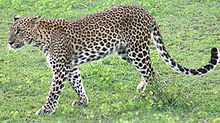
The Sri Lankan Leopard (Panthera pardus kotiya) is an endangered subspecies of leopard native to Sri Lanka.
The Yala National Park in the southeast protects herds of elephant, deer, and peacocks, and the Wilpattu National Park, the largest national park in Sri Lanka, in the northwest preserves the habitats of many water birds, such as storks, pelicans, ibis, and spoonbills. The island has four biosphere reserves, Bundala, Hurulu Forest Reserve, the Kanneliya-Dediyagala-Nakiyadeniya, and Sinharaja.[154] Out of these, Sinharaja forest reserve is home to 26 endemic birds and 20 rainforest species, including the elusive Red-faced Malkoha, Green-billed Coucal and Sri Lanka Blue Magpie. The untapped genetic potential of Sinharaja flora is enormous. Out of the 211 woody trees and lianas so far identified within the reserve, 139 (66%) are endemic. The Total vegetation density, including trees, shrubs, herbs and seedlings has been estimated to be around 240,000 individuals per hectare.
In addition, Sri Lanka is home to over 250 types of resident birds (see List). It has declared several bird sanctuaries including Kumana.[155] During the Mahaweli Program of the 1970s and 1980s in northern Sri Lanka, the government set aside four areas of land totalling 1,900 km2 (730 sq mi) as national parks. However the country's forest cover, which was around 49% in 1920, had been fallen to approximately 24% by 2009.[156][157]
[edit] Politics
Main article: Politics of Sri Lanka

The old parliament building of Sri Lanka, near the Galle Face Green, now the Presidential Secretariat.
Current politics in Sri Lanka is a contest between two rival coalitions led by the centre-leftist and progressivist United People's Freedom Alliance (UPFA), an offspring of Sri Lanka Freedom Party (SLFP), and the comparatively right-wing and pro-capitalist United National Party (UNP).[163] Sri Lanka is essentially a multi-party democracy with many smaller Buddhist, socialist and Tamil nationalist political parties. As of July 2011, the number of registered political parties in the country is 67.[164] Out of these, the Lanka Sama Samaja Party (LSSP), established in 1935 is the oldest.[165] UNP, established by D. S. Senanayake in 1946, was considered to be the largest single political party until recently.[166] It is the only political group which had a representation in all parliaments since the independence.[166] SLFP was founded by S. W. R. D. Bandaranaike, who was the Cabinet minister of Local Administration, before he left the UNP in July 1951.[167] SLFP registered its first victory in 1956, defeating the ruling UNP in 1956 Parliamentary election.[167] Following the parliamentary election in July 1960, Sirimavo Bandaranaike became the prime minister and the world's first elected female head of state.[168]
G. G. Ponnambalam, the Tamil nationalist counterpart of S. W. R. D. Bandaranaike,[169] founded the All Ceylon Tamil Congress (ACTC) in 1944. As an objection to Ponnambalam's cooperation with D. S. Senanayake, a dissident group led by S.J.V. Chelvanayakam broke away in 1949 and formed the Illankai Tamil Arasu Kachchi (ITAK) aka Federal Party. It was the main Tamil political party in Sri Lanka for next 2 decades.[170] Federal party advocated a more aggressive stance vis-à-vis the Sinhalese.[171] With the constitutional reforms of 1972, these parties created a common front, the Tamil United Front (later Tamil United Liberation Front). Tamil National Alliance, formed in October 2001 is the current successor of these Tamil political parties which had undergone much turbulences as Tamil militants' rise to power in late 1970s.[171][172] Janatha Vimukthi Peramuna, a Marxist-Leninist political party, founded by Rohana Wijeweera in 1965, serves as the 3rd force in the current political context.[173] It endorses radical leftist policies, with respect to the traditionalist leftist politics of LSSP and Communist Party.[171] Founded in 1981, Sri Lanka Muslim Congress is the largest Muslim political party in Sri Lanka.[174]
[edit] Government
Main articles: Constitution of Sri Lanka and Elections in Sri Lanka
| Flag | Lion Flag |
| Emblem | Gold Lion Passant |
| Anthem | Sri Lanka Matha |
| Butterfly | Troides darsius |
| Bird | Sri Lanka Junglefowl |
| Flower | Red and Blue Water Lily |
| Tree | Ceylon Ironwood (Nā) |
| Game | Volleyball |
The Sri Lankan government has 3 branches:
- Executive: The President of Sri Lanka is the head of state, the commander in chief of the armed forces, as well as head of government, and is popularly elected for a six-year term.[178] In the exercise of duties, the President is responsible to the parliament. The President appoints and heads a cabinet of ministers composed of elected members of parliament.[179] President is immune from legal proceedings while in office in respect of any acts done or omitted to be done by him either in his official or private capacity.[180] With the 18th amendment to the constitution in 2010, the President has no term limit, which previously stood at 2.[181]
- Legislative: The Parliament of Sri Lanka, is a unicameral 225-member legislature with 196 members elected in multi-seat constituencies and 29 by proportional representation.[182] Members are elected by universal (adult) suffrage based on a modified proportional representation system by district to a six-year term. The president may summon, suspend, or end a legislative session and dissolve Parliament any time after it has served for one year. The parliament reserves the power to make all laws.[183] President's deputy, the Prime Minister, leads the ruling party in parliament and shares many executive responsibilities, mainly in domestic affairs.
- Judicial: Sri Lanka's judiciary consists of a Supreme Court - the highest and final superior court of record,[183] a Court of Appeal, High Courts and a number of subordinate courts. Its highly complex legal system reflects diverse cultural influences.[184] The Criminal law is almost entirely based on British law. Basic Civil law relates to the Roman law and Dutch law. Laws pertaining to marriage, divorce, and inheritance are communal.[185] Due to ancient customary practices and/or religion, the Sinhala customary law (Kandyan law), the Thesavalamai and the Sharia law too are followed on special cases.[186] The President appoints judges to the Supreme Court, the Court of Appeal, and the High Courts. A judicial service commission, composed of the Chief Justice and two Supreme Court judges, appoints, transfers, and dismisses lower court judges.
[edit] Administrative divisions
Main articles: Provinces of Sri Lanka, Districts of Sri Lanka, and Divisional Secretariats of Sri Lanka
See also: List of cities in Sri Lanka and List of towns in Sri Lanka
For administrative purposes, Sri Lanka is divided into 9 provinces[187] and 25 districts.[188]- Provinces
| Administrative Divisions of Sri Lanka | |||||||
|---|---|---|---|---|---|---|---|
| Province | Capital | Area (km²) | Area (sq mi) |
Population | |||
| Central | Kandy | 5,674 | 2,191 | 2,423,966 | |||
| Eastern | Trincomalee | 9,996 | 3,859 | 1,460,939 | |||
| North Central | Anuradhapura | 10,714 | 4,137 | 1,104,664 | |||
| Northern | Jaffna | 8,884 | 3,430 | 1,311,776 | |||
| North Western | Kurunegala | 7,812 | 3,016 | 2,169,892 | |||
| Sabaragamuwa | Ratnapura | 4,902 | 1,893 | 1,801,331 | |||
| Southern | Galle | 5,559 | 2,146 | 2,278,271 | |||
| Uva | Badulla | 8,488 | 3,277 | 1,177,358 | |||
| Western | Colombo | 3,709 | 1,432 | 5,361,200 | |||
- Districts and local authorities
There are 3 other types of local authorities: Municipal Councils (18), Urban councils (13) and Pradeshiya Sabha (aka Pradesha Sabhai, 256).[196] Local authorities were originally based on the feudal counties named korale and rata, and were formerly known as 'D.R.O. divisions' after the 'Divisional Revenue Officer'.[197] Later the D.R.O.s became 'Assistant Government Agents' and the divisions were known as 'A.G.A. divisions'. These Divisional Secretariats are currently administered by a 'Divisional Secretary'.
| Largest cities of Sri Lanka (2010 Department of Census and Statistics estimate)[198] |
|||||||||||
|---|---|---|---|---|---|---|---|---|---|---|---|
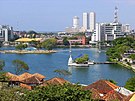 Colombo 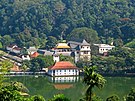 Kandy |
Rank | City Name | Province | Pop. | Rank | City Name | Province | Pop. |
 Galle 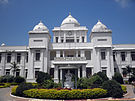 Jaffna |
||
| 1 | Colombo | Western | 685,246 | 11 | Batticaloa | Eastern | 97,648 | ||||
| 2 | Dehiwala-Mount Lavinia | Western | 234,559 | 12 | Katunayake | Western | 92,469 | ||||
| 3 | Moratuwa | Western | 204,849 | 13 | Battaramulla | Western | 85,348 | ||||
| 4 | Negombo | Western | 144,995 | 14 | Jaffna | Northern | 84,416 | ||||
| 5 | Trincomalee | Eastern | 126,902 | 15 | Dambulla | Central | 77,148 | ||||
| 6 | Kotte | Western | 126,872 | 16 | Maharagama | Western | 75,127 | ||||
| 7 | Kandy | Central | 120,087 | 17 | Dalugama | Western | 74,428 | ||||
| 8 | Vavuniya | Northern | 108,834 | 18 | Kotikawatta | Western | 72,858 | ||||
| 9 | Kalmunai | Eastern | 104,985 | 19 | Anuradhapura | North Central | 68,244 | ||||
| 10 | Galle | Southern | 97,807 | 20 | Kolonnawa | Western | 64,707 | ||||
[edit] Foreign relations and military
Main articles: Foreign relations of Sri Lanka and Sri Lanka Armed Forces

President Mahinda Rajapaksa with Russian President Dmitry Medvedev, at St. Petersburg Economic Forum, in June 2011.
One of the two parties that have governed Sri Lanka since its independence, UNP, is traditionally biased towards the West, with respect to its left-leaning counterpart, SLFP.[199] Sri Lankan Finance Minister J. R. Jayewardene, together with the then Australian Foreign Minister Sir Percy Spencer, proposed the Colombo Plan at Commonwealth Foreign Minister’s Conference held in Colombo in 1950.[200] In a remarkable move, Sri Lanka spoke in defence for a free Japan, while many countries were reluctant to allow a free Japan, at the San Francisco Peace Conference in 1951, and refused to accept the payment of reparations for that damage it had done to the country during World War II, that would harm Japan's economy.[201] Sri Lanka-China relations started as soon as the PRC was formed in 1949. Two countries signed an important Rice-Rubber Pact in 1952.[202] Sri Lanka played a vital role in Asian–African Conference in 1955, which was an important step toward the crystallization of the NAM.[203] The Bandaranaike government of 1956 significantly digressed from the pro-western policies of UNP government. Sri Lanka immediately recognised the new Cuba under Fidel Castro in 1959. Shortly after, Cuba's legendary revolutionary Ernesto Che Guevara paid a visit to Sri Lanka.[204] The Sirima-Shastri Pact of 1964[205] and Sirima-Gandhi Pact of 1974[206] were signed between Sri Lankan and Indian leaders in an attempt to solve the long standing dispute over the status of plantation workers of Indian origin. In 1974, Kachchatheevu, a small island in Palk Strait was formally ceded to Sri Lanka.[207] By this time, Sri Lanka was strongly involved in the NAM and Colombo held the fifth NAM summit of 1976.[208] The relationship between Sri Lanka and India became tensed under the government of J. R. Jayawardene.[121][209] As a result, India intervened in Sri Lankan Civil War and subsequently deployed the Indian Peace Keeping Force in 1987.[210] In the present, Sri Lanka enjoys extensive relations with China,[211] Russia[212] and Pakistan.[213]
Since independence from Britain in 1948, the primary focus of the armed forces has been on internal security, due to three major insurgencies, two by Marxist militants of the JVP and a 30 year long conflict with the LTTE which has been proscribed as a terrorist organisation by 32 countries. Due to these conflicts, the armed forces had expanded to its current size and are in a continuous mobilized state for the last 30 years.[219] Marking a rare occurrence in modern military history, Sri Lankan military was able to bring a decisive end to the Sri Lankan Civil War in May 2009.[220] Sri Lanka claimed itself the first country in the modern world to eradicate terrorism on its own soil.[221] Sri Lankan Armed Forces have engaged in United Nations peacekeeping operations since the early 1960s. It has contributed with forces as permanent contingents deployed in several UN peacekeeping missions in Chad, Lebanon and Haiti.[222]
[edit] Economy
Main article: Economy of Sri Lanka
According to the International Monetary Fund, Sri Lanka claims to a US$50 billion economy as of 2010.[5] It has a GDP of US$106.5 billion in terms of purchasing power parity. Sri Lanka is next only to Maldives in the South Asian region in terms of per capita income, with a nominal value of US$2,435 and PPP value of US$5,220.[5] It recorded a GDP growth of 8.2% in 2010 and it is estimated that GDP will grow by 9.5% in 2011, becoming one of the fastest growing economies of the world.[5] Colombo Stock Exchange was the best performing stock exchange in Asia in 2009 and 2010, by almost tripling in value during that time.[18]
The Colombo World Trade Center in Colombo. Presidential Secretariat, Bank of Ceylon and Galadhari Hotel are also visible in the image.
While the production and export of tea, rubber, coffee, sugar and other agricultural commodities remains important, the nation has moved steadily towards an industrialised economy with the development of food processing, textiles, telecommunications and finance. Main economic sectors of the country are tourism, tea export, clothing, rice production and other agricultural products. In addition to these economic sectors, overseas employment contributes highly in foreign exchange, most of them from the Middle East.[225] As of 2010, service sector makes up 60% of GDP, industrial sector 28% and agriculture sector 12%.[225] Private sector accounts for 85% of the economy.[226] India is the largest trading partner of Sri Lanka.[227] Economic disparies exist between the provinces, with Western province contributing to 45.1% of the GDP, Southern province and Central province, 10.7% and 10% respectively.[228] With the end of the war, Northern province reported a record 22.9% GDP growth in 2010.[229]

Sri Lanka's most widely known export, Ceylon tea, which is considered the "cleanest" tea in the world. Sri Lanka is also the world's 2nd largest exporter of tea.[230]
The Global Competitiveness Report published by the World Economic Forum has listed Sri Lanka as a transitive economy, from factor-driven stage to efficiency-driven stage, ranking 52nd in the global competitiveness.[233] It also ranked 45th in health and primary education, 32nd in business sophistication, 42nd in innovation and 41st in goods market efficiency out of the 142 countries surveyed. Sri Lanka ranks 8th in the World Giving Index, registering high levels of contentment and charitable behaviour in its society.[234] In 2010, The New York Times placed Sri Lanka at number 1 position in 31 places to visit.[235] Dow Jones classified Sri Lanka as an emerging market in 2010, and Citigroup classified it as a 3G country in February 2011.[236] Sri Lanka ranks well above other South Asian countries in Human Development Index (HDI) with 0.658 points.[237]
Although poverty has reduced by 50% during last 5 years, malnutrition remains a problem among children. 29% of the children under 5 years of age are reported to be underweight.[238] Nearly 58% of infants between 6 and 11 months and 38% of children between 12 and 23 months are anaemic. While Dengue remains the major infectious disease,[239] non-communicable diseasees (NCDs) account for 85% of ill health, disability and early death in Sri Lanka.[240] Sri Lankans have a life expectancy of 77.9 years at birth, which is 10% higher than the world average.[225] Infant mortality rate stands at 8.5 per 1000 births and maternal mortality rate at 0.39 per 1000 births, which is in par with figures of the developed countries. The universal, "pro-poor"[241] health care system adopted by the country has contributed much towards these figures.[242]
Sri Lanka has a A and B class road network exceeding 12,000 kilometres (7,460 mi).[243] It consists of 35 A grade highways and an expressway, connecting major cities. In addition, several other expressways are being built.[244] The railway network, operated by the state-run national railway operator, Sri Lanka Railways, spans 1,447 kilometres (900 mi).[245] Sri Lanka also has three deep-water ports, at Colombo, Galle, and Trincomalee, in addition to the newest port being built at Hambantota. Its flag carrier airline is the SriLankan Airlines.
[edit] Demographics
Main article: Demographics of Sri Lanka
Sri Lanka is the 53rd most populated nation in the world, with an annual population growth rate of 0.73%.[246] Sri Lanka has a birth rate of 17.6 births per 1,000 people and a death rate of 6.2 deaths per 1,000 people.[225] Population density is highest in western Sri Lanka, especially in and around the capital. Sinhalese constitute the largest ethnic group in the country, with 74% of the total population.[214] Sri Lankan Tamils are the second major ethnic group in the island, with a percentage of 12.6. Sri Lankan Moors comprise 7.4%. Tamils of Indian origin
were brought into the country as indentured labourers by British
colonists to work on estate plantations. Nearly 50% of them were repatriated following independence in 1948,[247]
They are distinguished from the native Tamil population that has
resided in Sri Lanka since ancient times. There are also small ethnic
groups such as the Burghers (of mixed European descent) and Austronesian peoples from Southeast Asia. Moreover, there is a small population of Vedda people whom are believed to be the original indigenous group to inhabit the island.[248]Sri Lanka is also a multi-religious country. Buddhism constitutes the religious faith of about 70% of the population of the island,[251] most of whom follow the Theravada school of Buddhism.[252] Buddhism was introduced to Sri Lanka in the 2nd century BCE by Venerable Mahinda.[252] A sapling of the Bodhi Tree under which the Buddha attained enlightenment was brought to Sri Lanka during the same time. The Pali Canon (Thripitakaya), having previously been preserved as an oral tradition, was first committed to writing in Sri Lanka around 30 BCE.[253] Sri Lanka has the longest continuous history of Buddhism of any predominately Buddhist nation,[252] with the Sangha having existed in a largely unbroken lineage since its introduction in the 2nd century BCE. During periods of decline, the Sri Lankan monastic lineage was revived through contact with Thailand and Burma.[253]

The Nallur Kandaswamy Kovil, Jaffna is one of the most sacred places for Hinduism in Sri Lanka, 10th century.
Islam is the third most dominant religion in the country, having first been brought to the island by Arab traders over the course of many centuries, most are Sunni who follow the Shafi'i school.[255] Most followers of Islam in Sri Lanka today are believed to be descendants of these Arab traders and the local women they married. In addition about 5% of the followers of Islam in the country comprise of Malays who descend from Malay Military regiments brought to the country during British colonial rule and political exiles from Indonesian islands and Malay peninsula during the same colonial period.
Christianity was also brought into the country by Western colonists in the early 16th century.[257] Around 8% of the Sri Lankan population are Christians. Out of them, 88% are Roman Catholics, who trace their religious heritage directly to the Portuguese. Rest of the Christians are evenly split between the Anglican Church of Ceylon and other Protestant faiths.[258] There is also a small population of Zoroastrian immigrants from India (Parsis) who settled in Ceylon during the period of British rule.[259] But the community has steadily dwindled in recent years.[260] Religion plays a prominent role in the life and culture of Sri Lankans. The Buddhist majority observe Poya Days, once per month according to the Lunar calendar. The Hindus and Muslims also observe their own holidays. Sri Lanka was ranked the 3rd most religious country in the world by a 2008 Gallup poll, with 99% of Sri Lankans saying religion is an important part of their daily life.[261]
[edit] Culture
Main article: Culture of Sri Lanka
The culture of Sri Lanka dates back over 2500 years.[262] It is influenced primarily by Buddhism and Hinduism.[263] According to Islamic folklore, Adam and Eve were offered refuge on the island as solace for their expulsion from the Garden of Eden.[264]
The island is the home to two main traditional cultures: the Sinhalese
(centred in the ancient cities of Kandy and Anuradhapura) and the Tamil
(centred in the city of Jaffna). In more recent times, the British
colonial culture has also influenced the locals. Sri Lanka claims a
democratic tradition matched by few other developing countries.[264]The first Tamil immigration was probably around the 3rd century BC.[263] Tamils co-existed with the Sinhalese people since then, and the early mixing rendered the two ethnic groups almost physically indistinct.[265] Ancient Sri Lanka is marked for its genius in hydraulic engineering and architecture. The rich cultural traditions is the basis of the country's long life expectancy, advanced health standards and high literacy rate.[264]
[edit] Food and festivals
Main articles: Cuisine of Sri Lanka, List of Sri Lankan sweets and desserts, and Festivals in Sri Lanka
The customary diet in Sri Lanka are rice
and curry, pittu (mixture of fresh rice meal, lightly roasted and mixed
with fresh grated coconut, then steamed in a bamboo mould), Kiribath (cooked in thick coconut cream for this unsweetened rice-pudding which is accompanied by a sharp chili relish called "lunumiris"), Roti (made from stoneground wholemeal flour, traditionally known as Atta flour), String hoppers (prepared by mixing rice flour with hot water and salt), wattalapam (rich pudding of Malay origin made of coconut milk, jaggery, cashew nuts, eggs, and various spices including cinnamon cloves and nutmeg), kottu, hoppers ("appa"), etc.[266] Jackfruit may replace rice and curries at times. Traditional meals are usually served on plantain leaf.Middle Eastern influences and practices are found in traditional Moor dishes. While Dutch and Portuguese influences are found with the island's Burgher community preserving their culture through traditional favourites such as Lamprais (rice cooked in stock and baked in a banana leaf), Breudher (Dutch Christmas cake) and Bolo Fiado (Portuguese-style layer cake).
Every year in mid April, Sri Lankans celebrate the Sinhalese and Hindu new year festival.[267] In addition, Esala Perahera, a symbolic Buddhist festival consisting of dances and richly decorated elephants, is held in Kandy, during the month of August.[268] Fire-dances, whip-dances, Kandian dances and various other cultural dances are integral parts of the festival. Tamils celebrate Thai Pongal, Maha Shivaratri and Muslims celebrate Hajj, Ramadan in their respective days of the year.
[edit] Visual, literary and performing arts
Main articles: Cinema of Sri Lanka, Music of Sri Lanka, Dances of Sri Lanka, Theatre of Sri Lanka, and Sri Lankan literature
The earliest music in Sri Lanka came from theatrical performances such as Kolam, Sokari and Nadagam.[272] Traditional music instruments such as Béra, Thammátama, Daŭla and Răbān were performed at these dramas. The first music album, Nurthi, was released through Radio Ceylon, in 1903. Songwriters like Mahagama Sekara and Ananda Samarakoon and musicians such as W. D. Amaradeva, H. R. Jothipala and Clarence Wijewardene have contributed much towards the upliftment of Sri Lankan music.[273] Baila is another popular music genre in the country, originated among Kaffirs or the or Afro-Sinhalese community.[274]
There are three main styles of Sri Lankan classical dance. They are, the Kandyan dances, low country dances and Sabaragamuwa dances. Out of these, the Kandyan style, which flourished under kings of the Kingdom of Kandy, is more prominent. It is a sophisticated form of dance,[275] that consists of five sub-categories: Ves dance, Naiyandi dance, Udekki dance, Pantheru dance and 18 Vannam.[276] An elaborate headdress is worn by the male dancers and a drum called Geta Béraya is used to assist the dancer to keep on rhythm.[275] In addition, four folk drama variants named Sokri, Kolam, Nadagam, Pasu, and several devil dance variants such as Sanni Yakuma and Kohomba Kankariya can be also observed.[276]
The history of Sri Lankan painting and sculpture can be traced as far back as to the 2nd or 3rd century BC.[277] The earliest mention about the art of painting on Mahavamsa, is to the drawing of a palace on cloth using cinnabar in the 2nd century BC. The chronicles have description of various paintings in relic-chambers of Buddhist stupas, and in monastic residence.
Theatre moved into the country when a Parsi company from Mumbai introduced Nurti, a blend of European and Indian theatrical conventions to the Colombo audience in 19th century.[276] The golden age of Sri Lankan drama and theatre began with the staging of Maname, a play written by Ediriweera Sarachchandra in 1956.[278] It was followed by a series of popular dramas like Sinhabāhu, Pabāvatī, Mahāsāra, Muudu Puththu and Subha saha Yasa.
The history of Sri Lankan literature runs at least two millennia back, and is heir to the Aryan literary tradition as embodied in the hymns of the Rigveda.[279] The Pāli Canon, the standard collection of scriptures in the Theravada Buddhist tradition, was written down in Sri Lanka during the Fourth Buddhist council, at the Alulena cave temple, Kegalle, as early as 29 BC.[280] Ancient chronicles such as Mahāvamsa, which was written in 6th century provide vivid descriptions of Sri Lankan dynasty. According to the German philosopher Wilhelm Geiger, the chronicles are based on Sinhala Atthakatha (commentary), that dates few more centuries back.[279] The oldest surviving prose work is the Dhampiya-Atuva-Getapadaya, compiled in the 9th century.[279] The greatest literary feats of medieval Sri Lanka include Sandesha Kāvya (poetic messages) such as Girā Sandeshaya (Parrot message), Hansa Sandeshaya (Swan message) and Salalihini Sandeshaya (Myna message). Poetry including Kavsilumina, Kavya-Sekharaya (diadem of poetry) and proses such as Saddharma-Ratnāvaliya, Amāvatura (Flood of nectar) and Pujāvaliya are also notable works of this period, which is considered to be the golden age of Sri Lankan literature.[279] The first modern-day novel, Meena, a work of Simon de Silva appeared in 1905,[276] and was followed by a number of revolutionary literary works. Martin Wickramasinghe, the author of Madol Doova is considered the iconic figure of Sri Lankan literature.[281]
[edit] Education
Main article: Education in Sri Lanka
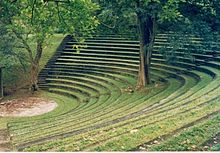
Sarachchandra open air theatre of University of Peradeniya,named in memory of Ediriweera Sarachchandra, Sri Lanka's premium playwright.
Kannangara led the establishment of the Madhya Maha Vidyalayas (Central Schools) in different parts of the country in order to provide education to Sri Lanka's rural children.[284] In 1942 a special education committee proposed extensive reforms to establish an efficient and quality education system for the people. However in the 1980s changes to this system saw the separation the of administration of schools between the central government and the provincial government. Thus the elite National Schools are controlled directly by the Ministry of Education and the provincial schools by the provincial government. Sri Lanka has approximately 9675 government schools, 817 private schools and Pirivenas.[225] The number of public universities in Sri Lanka is 15.[289] However, lack of responsiveness of the education system to labor market requirements, disparities in access to quality education, lack of an effective linkage between secondary and tertiary education remain major challenges for the education sector.[290] A number of private, degree awarding institutions have emerged in recent times to fill in these gaps. But still, the participation at tertiary level education hovers around 5.1%.[291]
[edit] Human rights and media
Main articles: Human rights in Sri Lanka and Media in Sri Lanka
Sri Lanka Broadcasting Corporation (formerly Radio Ceylon) is the oldest-running radio station in Asia.[292] It was established in 1923 by Edward Harper just three years after broadcasting was launched in Europe.[292] The station broadcasts services in Sinhalese, Tamil, English and Hindi.
Since the 1980s, a large number of private radio stations have also
been introduced. Broadcast television was introduced to the country in
1979 when the Independent Television Network
was launched. Initially all Television stations were state controlled,
but private television networks began broadcasts in 1992.[293]
As of 2010, 51 newspapers (30 Sinhala, 10 Tamil, 11 English) are
published and 34 TV stations and 52 radio stations are operated in the
country.[225] However in the recent years, freedom of the press in Sri Lanka has been widely criticised by media freedom groups.[294]Human rights as ratified by the United Nations are guaranteed by the constitution of Sri Lanka. However the human rights in Sri Lanka has also come under criticism by human rights groups such as Amnesty International and Human Rights Watch,[295] as well as the United States Department of State.[296] Both the separatist Liberation Tigers of Tamil Eelam (LTTE) and the government of Sri Lanka are accused of violating human rights. A report by an advisory panel to the UN secretary-general has accused both Sri Lankan government and the LTTE on alleged war crimes committed during final stages of the civil war.[297]
[edit] Sports
Main article: Sport in Sri Lanka

Sri Lankan cricket team practicing ahead of a Twenty20 match against Australia at Pallekele Cricket Stadium, August 2011.
The Sri Lanka national cricket team achieved considerable success beginning in the 1990s, rising from underdog status to winning the 1996 Cricket World Cup.[300] They also became the runners up of the Cricket World Cup in 2007,[301] 2011.[302] and of the ICC World Twenty20 in 2009.[303] Former Sri Lankan off-spinner, Muttiah Muralitharan has been rated as the greatest Test match bowler ever by Wisden Cricketers' Almanack.[304] Sri Lanka has won the Asia Cup in 1986,[305] 1997,[306] 2004[307] and 2008.[308] Current world records for highest team score in all three formats of the game are also held by Sri Lanka.[309] The country co-hosted the Cricket World Cup in 1996 and 2011.
Sri Lankans have won two medals at Olympic Games, both silver, by Duncan White at 1948 London Olympics for men's 400 metres hurdles[310] and by Susanthika Jayasinghe at 2000 Sydney Olympics for women's 200 metres.[311] In 1973, Mohammed Lafir won the World Billiards Championship, highest feat of a Sri Lankan in a Cue sport.[312] Aquatic sports such as boating, surfing, swimming, kitesurfing[313] and scuba diving on the coast, the beaches and backwaters attract a large number of Sri Lankans and foreign tourists. There are two styles of martial arts native to Sri Lanka, Cheena di and Angampora.[314]
[edit] See also
| Book: Sri Lanka | |
| Wikipedia books are collections of articles that can be downloaded or ordered in print. | |
- Outline of Sri Lanka
- Commonwealth of Nation
Dengue fever
From Wikipedia, the free encyclopediaFor other uses, see Dengue fever (disambiguation).
Dengue fever (UK: /ˈdɛŋɡeɪ/, US: /ˈdɛŋɡiː/), also known as breakbone fever, is an infectious tropical disease caused by the dengue virus. Symptoms include fever, headache, muscle and joint pains, and a characteristic skin rash that is similar to measles. In a small proportion of cases the disease develops into the life-threatening dengue hemorrhagic fever, resulting in bleeding, low levels of blood platelets and blood plasma leakage, or into dengue shock syndrome, where dangerously low blood pressure occurs.Dengue fever Classification and external resources
The typical rash seen in dengue feverICD-10 A90 ICD-9 061 DiseasesDB 3564 MedlinePlus 001374 eMedicine med/528 MeSH C02.782.417.214
Dengue is transmitted by several species of mosquito within the genus Aedes, principally A. aegypti. The virus has four different types; infection with one type usually gives lifelong immunity to that type, but only short-term immunity to the others. Subsequent infection with a different type increases the risk of severe complications. As there is no vaccine, prevention is sought by reducing the habitat and the number of mosquitoes and limiting exposure to bites.
Treatment of acute dengue is supportive, using either oral or intravenous rehydration for mild or moderate disease, and intravenous fluids and blood transfusion for more severe cases. The incidence of dengue fever has increased dramatically since the 1960s, with around 50–100 million people infected yearly. Early descriptions of the condition date from 1779, and its viral cause and the transmission were elucidated in the early 20th century. Dengue has become a global problem since the Second World War and is endemic in more than 110 countries. Apart from eliminating the mosquitoes, work is ongoing on a vaccine, as well as medication targeted directly at the virus.
Contents
[hide][edit] Signs and symptoms
Typically, people infected with dengue virus are asymptomatic (80%) or only have mild symptoms such as an uncomplicated fever.[1][2][3] Others have more severe illness (5%), and in a small proportion it is life-threatening.[1][3] The incubation period (time between exposure and onset of symptoms) ranges from 3–14 days, but most often it is 4–7 days.[4] Therefore, travelers returning from endemic areas are unlikely to have dengue if fever or other symptoms start more than 14 days after arriving home.[5] Children often experience symptoms similar to those of the common cold and gastroenteritis (vomiting and diarrhea),[6] but are more susceptible to the severe complications.[5]
[edit] Clinical course
The characteristic symptoms of dengue are sudden-onset fever, headache (typically located behind the eyes), muscle and joint pains, and a rash. The alternative name for dengue, "break-bone fever", comes from the associated muscle and joint pains.[1][7] The course of infection is divided into three phases: febrile, critical, and recovery.[8]
The febrile phase involves high fever, often over 40 °C (104 °F), and is associated with generalized pain and a headache; this usually lasts two to seven days.[7][8] At this stage, a rash occurs in approximately 50–80% of those with symptoms.[7][9] It occurs in the first or second day of symptoms as flushed skin, or later in the course of illness (days 4–7), as a measles-like rash.[9][10] Some petechiae (small red spots that do not disappear when the skin is pressed, which are caused by broken capillaries) can appear at this point,[8] as may some mild bleeding from the mucous membranes of the mouth and nose.[5][7] The fever itself is classically biphasic in nature, breaking and then returning for one or two days, although there is wide variation in how often this pattern actually happens.[10][11]
In some people, the disease proceeds to a critical phase, which follows the resolution of the high fever and typically lasts one to two days.[8] During this phase there may be significant fluid accumulation in the chest and abdominal cavity due to increased capillary permeability and leakage. This leads to depletion of fluid from the circulation and decreased blood supply to vital organs.[8] During this phase, organ dysfunction and severe bleeding, typically from the gastrointestinal tract, may occur.[5][8] Shock (dengue shock syndrome) and hemorrhage (dengue hemorrhagic fever) occur in less than 5% of all cases of dengue,[5] however those who have previously been infected with other serotypes of dengue virus ("secondary infection") are at an increased risk.[5][12]
The recovery phase occurs next, with resorption of the leaked fluid into the bloodstream.[8] This usually lasts two to three days.[5] The improvement is often striking, but there may be severe itching and a slow heart rate.[5][8] During this stage, a fluid overload state may occur; if it affects the brain, it may cause a reduced level of consciousness or seizures.[5]
[edit] Associated problems
Dengue can occasionally affect several other body systems,[8] either in isolation or along with the classic dengue symptoms.[6] A decreased level of consciousness occurs in 0.5–6% of severe cases, which is attributable either to infection of the brain by the virus or indirectly as a result of impairment of vital organs, for example, the liver.[6][11]
Other neurological disorders have been reported in the context of dengue, such as transverse myelitis and Guillain-Barré syndrome.[6] Infection of the heart and acute liver failure are among the rarer complications.[5][8]
[edit] Cause
[edit] Virology
Main article: Dengue virusDengue fever virus (DENV) is an RNA virus of the family Flaviviridae; genus Flavivirus. Other members of the same genus include yellow fever virus, West Nile virus, St. Louis encephalitis virus, Japanese encephalitis virus, tick-borne encephalitis virus, Kyasanur forest disease virus, and Omsk hemorrhagic fever virus.[11] Most are transmitted by arthropods (mosquitoes or ticks), and are therefore also referred to as arboviruses (arthropod-borne viruses).[11]
The dengue virus genome (genetic material) contains about 11,000 nucleotide bases, which code for the three different types of protein molecules (C, prM and E) that form the virus particle and seven other types of protein molecules (NS1, NS2a, NS2b, NS3, NS4a, NS4b, NS5) that are only found in infected host cells and are required for replication of the virus.[12][13] There are four strains of the virus, which are called serotypes, and these are referred to as DENV-1, DENV-2, DENV-3 and DENV-4.[2] All four serotypes can cause the full spectrum of disease.[12] Infection with one serotype is believed to produce lifelong immunity to that serotype but only short term protection against the others.[2][7]
The severe complications on secondary infection occurs particularly if someone previously exposed to serotype DENV-1 then contracts serotype DENV-2 or serotype DENV-3, or if someone previously exposed to type DENV-3 then acquires DENV-2.[13]
[edit] Transmission
Dengue virus is primarily transmitted by Aedes mosquitoes, particularly A. aegypti.[2] These mosquitoes usually live between the latitudes of 35° North and 35° South below an elevation of 1,000 metres (3,300 ft).[2] They bite primarily during the day.[14] Other Aedes species that transmit the disease include A. albopictus, A. polynesiensis and A. scutellaris.[2] Humans are the primary host of the virus,[2][11] but it also circulates in nonhuman primates.[15] An infection can be acquired via a single bite.[16] A female mosquito that takes a blood meal from a person infected with dengue fever becomes itself infected with the virus in the cells lining its gut. About 8–10 days later, the virus spreads to other tissues including the mosquito's salivary glands and is subsequently released into its saliva. The virus seems to have no detrimental effect on the mosquito, which remains infected for life. Aedes aegypti prefers to lay its eggs in artificial water containers, to live in close proximity to humans, and to feed off people rather than other vertebrates.[17]
Dengue can also be transmitted via infected blood products and through organ donation.[18][19] In countries such as Singapore, where dengue is endemic, the risk is estimated to be between 1.6 and 6 per 10,000 transfusions.[20] Vertical transmission (from mother to child) during pregnancy or at birth has been reported.[21] Other person-to-person modes of transmission have also been reported, but are very unusual.[7]
[edit] Predisposition
Severe disease is more common in babies and young children, and in contrast to many other infections it is more common in children that are relatively well nourished.[5] Women are more at risk than men.[13] Dengue can be life-threatening in people with chronic diseases such as diabetes and asthma.[13]
Polymorphisms (normal variations) in particular genes have been linked with an increased risk of severe dengue complications. Examples include the genes coding for the proteins known as TNFα, mannan-binding lectin,[1] CTLA4, TGFβ,[12] DC-SIGN, and particular forms of human leukocyte antigen.[13] A common genetic abnormality in Africans, known as glucose-6-phosphate dehydrogenase deficiency, appears to increase the risk.[22] Polymorphisms in the genes for the vitamin D receptor and FcγR seem to offer protection against severe disease in secondary dengue infection.[13]
[edit] Mechanism
When a mosquito carrying dengue virus bites a person, the virus enters the skin together with the mosquito's saliva. It binds to and enters white blood cells, and reproduces inside the cells while they move throughout the body. The white blood cells respond by producing a number of signaling proteins, such as interferon, which are responsible for many of the symptoms, such as the fever, the flu-like symptoms and the severe pains. In severe infection, the virus production inside the body is greatly increased, and many more organs (such as the liver and the bone marrow) can be affected, and fluid from the bloodstream leaks through the wall of small blood vessels into body cavities. As a result, less blood circulates in the blood vessels, and the blood pressure becomes so low that it cannot supply sufficient blood to vital organs. Furthermore, dysfunction of the bone marrow leads to reduced numbers of platelets, which are necessary for effective blood clotting; this increases the risk of bleeding, the other major complication of dengue fever.[22]
[edit] Viral reproduction
Once inside the skin, dengue virus binds to Langerhans cells (a population of dendritic cells in the skin that identifies pathogens).[22] The virus enters the cells through binding between viral proteins and membrane proteins on the Langerhans cell, specifically the C-type lectins called DC-SIGN, mannose receptor and CLEC5A.[12] DC-SIGN, a non-specific receptor for foreign material on dendritic cells, seems to be the main point of entry.[13] The dendritic cell moves to the nearest lymph node. Meanwhile, the virus genome is replicated in membrane-bound vesicles on the cell's endoplasmic reticulum, where the cell's protein synthesis apparatus produces new viral proteins, and the viral RNA is copied. Immature virus particles are transported to the Golgi apparatus, the part of the cell where some of the proteins receive necessary sugar chains (glycoproteins). The now mature new viruses bud on the surface of the infected cell and are released by exocytosis. They are then able to enter other white blood cells, such as monocytes and macrophages.[12]
The initial reaction of infected cells is to produce interferon, a cytokine that raises a number of defenses against viral infection through the innate immune system by augmenting the production of a large group of proteins mediated by the JAK-STAT pathway. Some serotypes of dengue virus appear to have mechanisms to slow down this process. Interferon also activates the adaptive immune system, which leads to the generation of antibodies against the virus as well as T cells that directly attack any cell infected with the virus.[12] Various antibodies are generated; some bind closely to the viral proteins and target them for phagocytosis (ingestion by specialized cells and destruction), but some bind the virus less well and appear instead to deliver the virus into a part of the phagocytes where it is not destroyed but is able to replicate further.[12]
[edit] Severe disease
Further information: Antibody-dependent enhancementIt is not entirely clear why secondary infection with a different strain of dengue virus places people at risk of dengue hemorrhagic fever and dengue shock syndrome. The most widely accepted hypothesis is that of antibody-dependent enhancement (ADE). The exact mechanism behind ADE is unclear. It may be caused by poor binding of non-neutralizing antibodies and delivery into the wrong compartment of white blood cells that have ingested the virus for destruction.[12][13] There is a suspicion that ADE is not the only mechanism underlying severe dengue-related complications,[1] and various lines of research have implied a role for T cells and soluble factors such as cytokines and the complement system.[22]
Severe disease is marked by two problems: dysfunction of endothelium (the cells that line blood vessels) and disordered blood clotting.[6] Endothelial dysfunction leads to the leakage of fluid from the blood vessels into the chest and abdominal cavities, while coagulation disorder is responsible for the bleeding complications. Higher viral load in the blood and involvement of other organs (such as the bone marrow and the liver) are associated with more severe disease. Cells in the affected organs die, leading to the release of cytokines and activation of both coagulation and fibrinolysis (the opposing systems of blood clotting and clot degradation). These alterations together lead to both endothelial dysfunction and coagulation disorder.[22]
[edit] Diagnosis
The diagnosis of dengue is typically made clinically, on the basis of reported symptoms and physical examination; this applies especially in endemic areas.[1] However, early disease can be difficult to differentiate from other viral infections.[5] A probable diagnosis is based on the findings of fever plus two of the following: nausea and vomiting, rash, generalized pains, low white blood cell count, positive tourniquet test, or any warning sign (see table) in someone who lives in an endemic area.[23] Warning signs typically occur before the onset of severe dengue.[8] The tourniquet test, which is particularly useful in settings where no laboratory investigations are readily available, involves the application of a blood pressure cuff for five minutes, followed by the counting of any petechial hemorrhages; a higher number makes a diagnosis of dengue more likely.[8] It can be difficult to distinguish dengue fever and chikungunya, a similar viral infection that shares many symptoms and occurs in similar parts of the world to dengue.[7] Often, investigations are performed to exclude other conditions that cause similar symptoms, such as malaria, leptospirosis, typhoid fever, and meningococcal disease.[5]Warning signs[23]Abdominal pain Ongoing vomiting Liver enlargement Mucosal bleeding High hematocrit with low platelets Lethargy
The earliest change detectable on laboratory investigations is a low white blood cell count, which may then be followed by low platelets and metabolic acidosis.[5] In severe disease, plasma leakage results in hemoconcentration (as indicated by a rising hematocrit) and hypoalbuminemia.[5] Pleural effusions or ascites can be detected by physical examination when large,[5] but the demonstration of fluid on ultrasound may assist in the early identification of dengue shock syndrome.[1][5] The use of ultrasound is limited by lack of availability in many settings.[1]
[edit] Classification
The World Health Organization's 2009 classification divides dengue fever into two groups: uncomplicated and severe.[1][23] This replaces the 1997 WHO classification, which needed to be simplified as it had been found to be too restrictive, though the older classification is still widely used.[23] The 1997 classification divided dengue into undifferentiated fever, dengue fever, and dengue hemorrhagic fever.[5][24] Dengue hemorrhagic fever was subdivided further into grades I–IV. Grade I is the presence only of easy bruising or a positive tourniquet test in someone with fever, grade II is the presence of spontaneous bleeding into the skin and elsewhere, grade III is the clinical evidence of shock, and grade IV is shock so severe that blood pressure and pulse cannot be detected.[24] Grades III and IV are referred to as "dengue shock syndrome".[23][24]
[edit] Laboratory tests
Dengue fever may be diagnosed by microbiological laboratory testing.[23] This can be done by virus isolation in cell cultures, nucleic acid detection by PCR, viral antigen detection or specific antibodies (serology).[13][25] Virus isolation and nucleic acid detection are more accurate than antigen detection, but these tests are not widely available due to their greater cost.[25] All tests may be negative in the early stages of the disease.[5][13]
These laboratory tests are only of diagnostic value during the acute phase of the illness with the exception of serology. Tests for dengue virus-specific antibodies, types IgG and IgM, can be useful in confirming a diagnosis in the later stages of the infection. Both IgG and IgM are produced after 5–7 days. The highest levels (titres) of IgM are detected following a primary infection, but IgM is also produced in secondary and tertiary infections. The IgM becomes undetectable 30–90 days after a primary infection, but earlier following re-infections. IgG, by contrast, remains detectable for over 60 years and, in the absence of symptoms, is a useful indicator of past infection. After a primary infection the IgG reaches peak levels in the blood after 14–21 days. In subsequent re-infections, levels peak earlier and the titres are usually higher. Both IgG and IgM provide protective immunity to the infecting serotype of the virus. In the laboratory test the IgG and the IgM antibodies can cross-react with other flaviviruses, such as yellow fever virus, which can make the interpretation of the serology difficult.[7][13][26] The detection of IgG alone is not considered diagnostic unless blood samples are collected 14 days apart and a greater than fourfold increase in levels of specific IgG is detected. In a person with symptoms, the detection of IgM is considered diagnostic.[26]
[edit] Prevention
There are no approved vaccines for the dengue virus.[1] Prevention thus depends on control of and protection from the bites of the mosquito that transmits it.[14][27] The World Health Organization recommends an Integrated Vector Control program consisting of five elements: (1) Advocacy, social mobilization and legislation to ensure that public health bodies and communities are strengthened, (2) collaboration between the health and other sectors (public and private), (3) an integrated approach to disease control to maximize use of resources, (4) evidence-based decision making to ensure any interventions are targeted appropriately and (5) capacity-building to ensure an adequate response to the local situation.[14]
The primary method of controlling A. aegypti is by eliminating its habitats.[14] This is done by emptying containers of water or by adding insecticides or biological control agents to these areas,[14] although spraying with organophosphate or pyrethroid insecticides is not thought to be effective.[3] Reducing open collections of water through environmental modification is the preferred method of control, given the concerns of negative health effect from insecticides and greater logistical difficulties with control agents.[14] People can prevent mosquito bites by wearing clothing that fully covers the skin, using mosquito netting while resting, and/or the application of insect repellent (DEET being the most effective).[16]
[edit] Management
There are no specific treatments for dengue fever.[1] Treatment depends on the symptoms, varying from oral rehydration therapy at home with close follow-up, to hospital admission with administration of intravenous fluids and/or blood transfusion.[28] A decision for hospital admission is typically based on the presence of the "warning signs" listed in the table above, especially in those with preexisting health conditions.[5]
Intravenous hydration is usually only needed for one or two days.[28] The rate of fluid administration is titrated to a urinary output of 0.5–1 mL/kg/hr, stable vital signs and normalization of hematocrit.[5] Invasive medical procedures such as nasogastric intubation, intramuscular injections and arterial punctures are avoided, in view of the bleeding risk.[5] Paracetamol (acetaminophen) is used for fever and discomfort while NSAIDs such as ibuprofen and aspirin are avoided as they might aggravate the risk of bleeding.[28] Blood transfusion is initiated early in patients presenting with unstable vital signs in the face of a decreasing hematocrit, rather than waiting for the hemoglobin concentration to decrease to some predetermined "transfusion trigger" level.[29] Packed red blood cells or whole blood are recommended, while platelets and fresh frozen plasma are usually not.[29]
During the recovery phase intravenous fluids are discontinued to prevent a state of fluid overload.[5] If fluid overload occurs and vital signs are stable, stopping further fluid may be all that is needed.[29] If a person is outside of the critical phase, a loop diuretic such as furosemide may be used to eliminate excess fluid from the circulation.[29]
[edit] Epidemiology
See also: Dengue fever outbreaksMost people with dengue recover without any ongoing problems.[23] The mortality is 1–5% without treatment,[5] and less than 1% with adequate treatment;[23] however severe disease carries a mortality of 26%.[5] Dengue is endemic in more than 110 countries.[5] It infects 50 to 100 million people worldwide a year, leading to half a million hospitalizations,[1] and approximately 12,500–25,000 deaths.[6][30]
The most common viral disease transmitted by arthropods,[12] dengue has a disease burden estimated to be 1600 disability-adjusted life years per million population, which is similar to other childhood and tropical diseases such as tuberculosis.[13] As a tropical disease dengue is deemed only second in importance to malaria,[5] though the World Health Organization counts dengue as one of sixteen neglected tropical diseases.[31]
The incidence of dengue increased 30 fold between 1960 and 2010.[32] This increase is believed to be due to a combination of urbanization, population growth, increased international travel, and global warming.[1] The geographical distribution is around the equator with 70% of the total 2.5 billion people living in endemic areas from Asia and the Pacific.[32] In the United States, the rate of dengue infection among those who return from an endemic area with a fever is 2.9–8.0%,[16] and it is the second most common infection after malaria to be diagnosed in this group.[7]
Until 2003, dengue was classified as a potential bioterrorism agent, but subsequent reports removed this classification as it was deemed too difficult to transfer and only caused hemorrhagic fever in a relatively small proportion of people.[33]
Like most arboviruses, dengue virus is maintained in nature in cycles that involve preferred blood-sucking vectors and vertebrate hosts. The viruses are maintained in the forests of Southeast Asia and Africa by transmission from female Aedes mosquitoes—of species other than A. aegypti—to her offspring and to lower primates. In rural settings the virus is transmitted to humans by A. aegypti and other species of Aedes such as A. albopictus. In towns and cities, the virus is primarily transmitted to humans by A. aegypti, which is highly domesticated. In all settings the infected lower primates or humans greatly increase the number of circulating dengue viruses. This is called amplification.[34] The urban cycle is the most important to infections of humans and dengue infections are primarily confined to towns and cities.[35] In recent decades, the expansion of villages, towns and cities in endemic areas, and the increased mobility of humans has increased the number of epidemics and circulating viruses. Dengue fever, which was once confined to Southeast Asia, has now spread to Southern China, countries in the Pacific Ocean and America,[35] and might pose a threat to Europe.[3]
[edit] History
The first record of a case of probable dengue fever is in a Chinese medical encyclopedia from the Jin Dynasty (265–420 AD) which referred to a "water poison" associated with flying insects.[36][37] There have been descriptions of epidemics in the 17th century, but the most plausible early reports of dengue epidemics are from 1779 and 1780, when an epidemic swept Asia, Africa and North America.[37] From that time until 1940, epidemics were infrequent.[37]
In 1906, transmission by the Aedes mosquitoes was confirmed, and in 1907 dengue was the second disease (after yellow fever) that was shown to be caused by a virus.[38] Further investigations by John Burton Cleland and Joseph Franklin Siler completed the basic understanding of dengue transmission.[38]
The marked spread of dengue during and after the Second World War has been attributed to ecologic disruption. The same trends also led to the spread of different serotypes of the disease to new areas, and to the emergence of dengue hemorrhagic fever. This severe form of the disease was first reported in the Philippines in 1953; by the 1970s, it had become a major cause of child mortality and had emerged in the Pacific and the Americas.[37] Dengue hemorrhagic fever and dengue shock syndrome were first noted in Central and South America in 1981, as DENV-2 was contracted by people who had previously been infected with DENV-1 several years earlier.[11]
[edit] Etymology
The origins of the word "dengue" are not clear, but one theory is that it is derived from the Swahili phrase Ka-dinga pepo, which describes the disease as being caused by an evil spirit.[36] The Swahili word dinga may possibly have its origin in the Spanish word dengue, meaning fastidious or careful, which would describe the gait of a person suffering the bone pain of dengue fever.[39] However, it is possible that the use of the Spanish word derived from the similar-sounding Swahili.[36] Slaves in the West Indies having contracted dengue were said to have the posture and gait of a dandy, and the disease was known as "dandy fever".[40][41]
The term "break-bone fever" was first applied by physician and Founding Father Benjamin Rush, in a 1789 report of the 1780 epidemic in Philadelphia. In the report he uses primarily the more formal term "bilious remitting fever".[33][42] The term dengue fever came into general use only after 1828.[41] Other historical terms include "breakheart fever" and "la dengue".[41] Terms for severe disease include "infectious thrombocytopenic purpura" and "Philippine", "Thai", or "Singapore hemorrhagic fever".[41]
[edit] Research
Research efforts to prevent and treat dengue include various means of vector control,[43] vaccine development, and antiviral drugs.[27]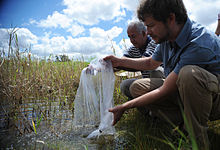
Public health officers releasing P. reticulata fry into an artificial lake in the Lago Norte district of Brasília, Brazil, as part of a vector control effort.
With regards to vector control, a number of novel methods have been used to reduce mosquito numbers with some success including the placement of the guppy (Poecilia reticulata) or copepods in standing water to eat the mosquito larvae.[43]
There are ongoing programs working on a dengue vaccine to cover all four serotypes.[27] One of the concerns is that a vaccine could increase the risk of severe disease through antibody-dependent enhancement.[44] The ideal vaccine is safe, effective after one or two injections, covers all serotypes, does not contribute to ADE, is easily transported and stored, and is both affordable and cost-effective.[44] As of 2009, a number of vaccines were undergoing testing.[13][33][44] It is hoped that the first products will be commercially available by 2015.[27]
Apart from attempts to control the spread of the Aedes mosquito and work to develop a vaccine against dengue, there are ongoing efforts to develop antiviral drugs that would be used to treat attacks of dengue fever and prevent severe complications.[45][46] Discovery of the structure of the viral proteins may aid the development of effective drugs.[46] There are several plausible targets. The first approach is inhibition of the viral RNA-dependent RNA polymerase (coded by NS5), which copies the viral genetic material, with nucleoside analogs. Secondly, it may be possible to develop specific inhibitors of the viral protease (coded by NS3), which splices viral proteins.[47] Finally, it may be possible to develop entry inhibitors, which stop the virus entering cells, or inhibitors of the 5′ capping process, which is required for viral replication.[45] Livestock
From Wikipedia, the free encyclopediaFor other uses, see Livestock (disambiguation).Livestock refers to one or more domesticated animals raised in an agricultural setting to produce commodities such as food, fiber and labor. The term "livestock" as used in this article does not include poultry or farmed fish; however the inclusion of these, especially poultry, within the meaning of "livestock" is common.
Livestock generally are raised for subsistence or for profit. Raising animals (animal husbandry) is an important component of modern agriculture. It has been practised in many cultures since the transition to farming from hunter-gather lifestyles.
Contents
[hide][edit] History
Animal-rearing has its origins in the transition of cultures to settled farming communities rather than hunter-gatherer lifestyles. Animals are ‘domesticated’ when their breeding and living conditions are controlled by humans. Over time, the collective behaviour, life cycle, and physiology of livestock have changed radically. Many modern farm animals are unsuited to life in the wild. Dogs were domesticated in East Asia about 15,000 years ago, Goats and sheep were domesticated around 8000 BCE in Asia. Swine or pigs were domesticated by 7000 BCE in the Middle East and China. The earliest evidence of horse domestication dates to around 4000 BCE[1]
Older English sources, such as the King James Version of the Bible, refer to livestock in general as "cattle", as opposed to the word "deer", which then was used for wild animals which were not owned. The word cattle is derived from Middle English chatel, which meant all kinds of movable personal property,[2] including of course livestock, which was differentiated from non-movable real-estate ("real property"). In later English, sometimes smaller livestock was called "small cattle" in that sense of movable property on land, which was not automatically bought or sold with the land. Today, the modern meaning of "cattle", without a qualifier, usually refers to domesticated bovines (see Cattle).[citation needed] Other species of the genus Bos sometimes are called wild cattle.
[edit] Types
The term "livestock" is nebulous and may be defined narrowly or broadly. On a broader view, livestock refers to any breed or population of animal kept by humans for a useful, commercial purpose. This can mean domestic animals, semi-domestic animals, or captive wild animals. Semi-domesticated refers to animals which are only lightly domesticated or of disputed status. These populations may also be in the process of domestication. Some people may use the term livestock to refer to only domestic animals or even to only red meat animals.
[edit] Animal rearing
‘Livestock’ are defined, in part, by their end purpose as the production of food, fiber and/or labor.
The economic value of livestock includes:
- Meat
- the production of a useful form of dietary protein and energy
- Dairy products
- Mammalian livestock can be used as a source of milk, which can in turn easily be processed into other dairy products, such as yogurt, cheese, butter, ice cream, kefir, and kumis. Using livestock for this purpose can often yield several times the food energy of slaughtering the animal outright.
- Fiber
- Livestock produce a range of fiber/textiles. For example, sheep and goats produce wool and mohair; cows, deer, and sheep skins can be made into leather; and bones, hooves and horns of livestock can be used.
- Fertilizer
- Manure can be spread on fields to increase crop yields. This is an important reason why historically, plant and animal domestication have been intimately linked. Manure is also used to make plaster for walls and floors, and can be used as a fuel for fires. The blood and bone of animals are also used as fertilizer.
- Labor
- Animals such as horses, donkey, and yaks can be used for mechanical energy. Prior to steam power, livestock were the only available source of non-human labor. They are still used for this purpose in many places of the world, including ploughing fields, transporting goods, and military functions.
- Land management
- The grazing of livestock is sometimes used as a way to control weeds and undergrowth. For example, in areas prone to wild fires, goats and sheep are set to graze on dry scrub which removes combustible material and reduces the risk of fires.
[edit] Farming practices
Main article: animal husbandryFarming practices vary dramatically worldwide and between types of animals. Livestock are generally kept in an enclosure, are fed by human-provided food[citation needed] and are intentionally bred, but some livestock are not enclosed, or are fed by access to natural foods, or are allowed to breed freely, or any combination thereof. Livestock raising historically was part of a nomadic or pastoral form of material culture. The herding of camels and reindeer in some parts of the world remains unassociated with sedentary agriculture. The transhumance form of herding in the Sierra Nevada Mountains of California still continues, as cattle, sheep or goats are moved from winter pasture in lower elevation valleys to spring and summer pasture in the foothills and alpine regions, as the seasons progress. Cattle were raised on the open range in the Western United States and Canada, on the Pampas of Argentina, and other prairie and steppe regions of the world.
The enclosure of livestock in pastures and barns is a relatively new development in the history of agriculture. When cattle are enclosed, the type of ‘enclosure’ may vary from a small crate, a large fenced pasture or a paddock. The type of feed may vary from natural growing grass, to highly sophisticated processed feed. Animals are usually intentionally bred through artificial insemination or through supervised mating. Indoor production systems are generally used only for pigs and poultry, as well as for veal cattle. Indoor animals are generally farmed intensively, as large space requirements would make indoor farming unprofitable and impossible. However, indoor farming systems are controversial due to the waste they produce, odour problems, the potential for groundwater contamination and animal welfare concerns. (For further discussion on intensively farmed livestock, see factory farming, and intensive pig farming).
Other livestock are farmed outside, although the size of enclosure and level of supervision may vary. In large open ranges animals may be only occasionally inspected or yarded in "round-ups" or a muster (livestock). Herding dogs may be used for mustering livestock as are cowboys, stockmen and jackaroos on horses, or with vehicles and also by helicopters. Since the advent of barbed wire (in the 1870s) and electric fence technology, fencing pastures has become much more feasible and pasture management simplified. Rotation of pasturage is a modern technique for improving nutrition and health while avoiding environmental damage to the land. In some cases very large numbers of animals may be kept in indoor or outdoor feeding operations (on feedlots), where the animals' feed is processed, offsite or onsite, and stored on site then fed to the animals.
Livestock - especially cattle - may be branded to indicate ownership and age, but in modern farming identification is more likely to be indicated by means of ear tags than branding. Sheep are also frequently marked by means of ear marks and/or ear tags. As fears of mad cow disease and other epidemic illnesses mount, the use of implants to monitor and trace animals in the food production system is increasingly common, and sometimes required by government regulations.
Modern farming techniques seek to minimize human involvement, increase yield, and improve animal health. Economics, quality and consumer safety all play a role in how animals are raised. Drug use and feed supplements (or even feed type) may be regulated, or prohibited, to ensure yield is not increased at the expense of consumer health, safety or animal welfare. Practices vary around the world, for example growth hormone use is permitted in the United States, but not in stock to be sold to the European Union. The improvement of health, using modern farming techniques, on the part of animals has come into question. Feeding corn to cattle, which have historically eaten grasses, is an example; where the cattle are less adapted, the rumen pH changes to more acidic, leading to liver damage and other difficulties.[citation needed] The US F.D.A. still allows feedlots to feed nonruminant animal proteins to cattle. For example, feeding chicken manure and poultry meal is acceptable for cattle, and beef or pork meat and bone meal is being fed to chickens.
[edit] Predation
Livestock farmers had suffered from wild animal predation and theft by rustlers. In North America, gray wolf, grizzly bear, cougar, black bear, and coyote are sometimes considered a threat to livestock. In Eurasia and Africa, wolf, brown bear, leopard, tiger, lion, dhole, black bear, spotted hyena, and others caused livestock deaths. In Australia, the dingo, foxes, wedge-tailed eagles, hunting and domestic dogs (especially) cause problems for graziers because they often kill for fun.[6][7] In Latin America, feral dogs cause livestock deaths in nightfall.
[edit] Disease
Livestock diseases compromise animal welfare, reduce productivity, and can infect humans. Animal diseases may be tolerated, reduced through animal husbandry, or reduced through antibiotics and vaccines. In developing countries, animal diseases are tolerated in animal husbandry, resulting in considerably reduced productivity, especially given the low health-status of many developing country herds. Disease management for gains in productivity is often the first step taken in implementing an agriculture policy.
Disease management can be achieved through changes in animal husbandry. These measures may aim to control spread using biosecurity measures, such as controlling animal mixing, controlling entry to farm lots and the use of protective clothing, and quarantining sick animals. Diseases also may be controlled by the use of vaccines and antibiotics. Antibiotics in sub-therapeutic doses may also be used as a growth-promoter, increasing growth by 10-15%.[8] The issue of antibiotic resistance has limited the practices of preventative dosing such as antibiotic-laced feed. Countries will often require the use of veterinary certificates before transporting, selling or showing animals. Disease-free areas often rigorously enforce rules for entry of potentially diseased animals, including quarantine.
[edit] Transportation and marketing
Main article: Livestock transportationSince many livestock are herd animals, they were historically driven to market "on the hoof" to a town or other central location. During the period after the American Civil War, the abundance of Longhorn cattle in Texas, and the demand for beef in Northern markets, led to the implementation of the Old West cattle drive. The method is still used in some parts of the world. Truck transport is now common in developed countries. Local and regional livestock auctions and commodity markets facilitate trade in livestock. In other areas, livestock may be bought and sold in a bazaar, such as may be found in many parts of Central Asia, or a flea market type setting.
Stock shows and fairs are events where people bring their best livestock to compete with one another. Organizations like 4-H, Block & Bridle, and FFA encourage young people to raise livestock for show purposes. Special feeds are purchased and hours may be spent prior to the show grooming the animal to look its best. In cattle, sheep, and swine shows, the winning animals are frequently auctioned off to the highest bidder, and the funds are placed into a scholarship fund for its owner. The movie Grand Champion, released in 2004, is the story of a young Texas boy's experience raising a prize steer.
[edit] Animal welfare
The issue of raising livestock for human benefit raises the issue of the relationship between humans and animals, in terms of the status of animals and obligations of people. Animal welfare is the viewpoint that animals under human care should be treated in such a way that they do not suffer unnecessarily. What is ‘unnecessary’ suffering may vary. Generally, though, the animal welfare perspective is based on an interpretation of scientific research on farming practices. By contrast, animal rights is the viewpoint that using animals for human benefit is, by its nature, generally exploitation, regardless of the farming practices used. Animal rights activists would generally be vegan or vegetarian, whereas it is consistent with the animal welfare perspective to eat meat, depending on production processes.
A shepherd boy in India. Livestock are extremely important to the livelihoods of rural smallholder farmers, particularly in the developing world.
Animal welfare groups generally seek to generate public discussion on livestock raising practices and secure greater regulation and scrutiny of livestock industry practices. Animal rights groups usually seek the abolition of livestock farming, although some groups may recognise the necessity of achieving more stringent regulation first. Animal welfare groups, such as the RSPCA, are often, in first world countries, given a voice at governmental level in the development of policy. Animal rights groups find it harder to find methods of input, and may go further and advocate civil disobedience or violence.
A number of animal husbandry practices have been the subject of campaigns in the 1990s and 2000s and have led to legislation in some countries. Confinement of livestock in small and unnatural spaces is often done for economic or health reasons. Animals may be kept in the minimum size of cage or pen with little or no space to exercise. Where livestock are used as a source of power, they may be pushed beyond their limits to the point of exhaustion. The public visibility of this abuse meant it was one of the first areas to receive legislation in the nineteenth century in European countries, but it still goes on in parts of Asia. Broiler hens may be de-beaked, pigs may have deciduous teeth pulled, cattle may be de-horned and branded, dairy cows and sheep may have tails cropped, merino sheep may be mulesed, and many types of male animals are castrated. Animals may be transported long distances to market and slaughter. Overcrowded conditions, heat from tropical-area shipping and lack of food, water and rest breaks have been subject to legislation and protest. (See Live Export) Slaughter of livestock was an early target for legislation. Campaigns continue to target Halal and Kosher religious ritual slaughter.
[edit] Environmental impact
See also: Environmental effects of meat productionAt first reports like the United Nations report "Livestock's Long Shadow" cast a pall over the livestock sector (primarily cattle, chickens, and pigs) for 'emerging as one of the top two or three most significant contributors to our most serious environmental problems.' The United Nations controversially[citation needed] included emissions from deforestation as part of its methodology. Rather than the 18% figure that placed on the sector as major contributor to emissions, the real figure, less deforestation is actually 12%[citation needed]. In April 2008, the [United States Environmental Protection Agency] released a major stocktake of emissions in the United States entitled Inventory of U.S. Greenhouse Gas Emissions and Sinks: 1990-2006.[9] On 6.1 it found "In 2006, the agricultural sector was responsible for emissions of 454.1 teragrams of CO2 equivalent (Tg CO2 Eq.), or 6 percent of total U.S. greenhouse gas emissions." By way of comparison, transportation in the US produces more than 25% of all emissions.
The issue of livestock as a major policy focus remains, especially when dealing with problems of deforestation in neotropical areas, land degradation, climate change and air pollution, water shortage and water pollution, and loss of biodiversity. A research team at Obihiro University of Agriculture and Veterinary Medicine in Hokkaidō found that supplementing the animals' diet with cysteine, a type of amino acid, and nitrate can reduce the methane gas produced, without jeopardising the cattle's productivity or the quality of their meat and milk.[10]
Deforestation Deforestation impacts the carbon cycle (and global and regional climate) and causes habitat loss of many species. Forests that are sinks for the carbon cycle are lost through deforestation. Forests are either logged or burned to make room for grasslands, often the area needed is extensive. Deforestation can also create fragmentation, allowing only patches of habitat for species to live. If patches are distant and small, gene flow is reduced, habitat is altered, edge effects will occur and there will be more opportunities for invasive species to intrude.[11]
Land Degradation Research from the University of Botswana in 2008 has found that farmers' common practice of overstocking cattle to cope with drought losses made ecosystems more vulnerable and risked long term damage to cattle herds, in turn, by actually depleting scarce biomass. The study of the Kgatleng district of Botswana predicted that by 2050, the cycle of mild drought is likely to become shorter for the region (18 months instead of two years) due to climate change.[12]
Climate Change & Air Pollution Methane is one of the gasses emitted from livestock manure; it persists for long periods of time and is a green house gas. It is the second most abundant green house gas after carbon dioxide.[13] Even though there is less methane then carbon dioxide its ability to warm the atmosphere is 25 times greater.[13]
Water Shortage Livestock require water for consumption but also for watering drops necessary for feed. Grains are often used to feed live stock about 50% of US grains produced does and 40% of world grains produced does as well.[14] Grain and in general crop production requires various amounts of water, it takes 100,000 liters of water for a kilogram of grain fed beef, compared to wheat, which takes 900 liters.[14]
Water Pollution Fertilizers that often contain manure are used to grow such crops (as cereal and fodder) that have phosphorus and nitrogen in them, 95% of which is estimated to be lost to the environment.[15] The pollutants then cause dead zones for plants and aquatic animals due to the lack of oxygen in the water.[16] The lack of oxygen is known as eutrophication, where organisms present in the water grow excessively and then later decompose using up the oxygen in the water. The most prominent example of such is the Gulf of Mexico, where much of the nutrients in fertilizer used in the mid west are funneled down the Mississippi River into the Gulf causing massive dead zones. Another pollutant not most commonly though of is antibiotics and hormones. In southern Asia vultures that consumed carcasses of livestock declined 95% due to antibiotic known as Diclofenac.[11]
Alternatives Researchers in Australia are looking into the possibility of reducing methane from cattle and sheep by introducing digestive bacteria from kangaroo intestines into livestock.[17]
In semi arid rangelands such as the Great Plains in the U.S., there has been research that provides evidence that livestock can be beneficial to maintaining grassland habitats. Livestock create and maintain habitat for big game species [18]
[edit] Legal definitions
United States federal legislation sometimes more narrowly defines the term to make specified agricultural commodities either eligible, or ineligible, for a program or activity. For example, the Livestock Mandatory Reporting Act of 1999 (P.L. 106-78, Title IX) defines livestock only as cattle, swine, and lambs. However, 1988 disaster assistance legislation defined the term as “cattle, sheep, goats, swine, poultry (including egg-producing poultry), equine animals used for food or in the production of food, fish used for food, and other animals designated by the Secretary.”[19]
[edit] See also
- Agribusiness
- Agriculture
- Agroecology
- Amenable species
- Aquaculture (cultivation of aquatic animals and plants)
- Beekeeping
- California Proposition 2 (2008)
- Cattle (disambiguation)
- Cuniculture (rabbit farming)
- Environmental effects of meat production
- Fur farming
Marine biology
From Wikipedia, the free encyclopedia
This article needs additional citations for verification. Please help improve this article by adding citations to reliable sources. Unsourced material may be challenged and removed. (March 2009) Marine biology is the scientific study of organisms in the ocean or other marine or brackish bodies of water. Given that in biology many phyla, families and genera have some species that live in the sea and others that live on land, marine biology classifies species based on the environment rather than on taxonomy. Marine biology differs from marine ecology as marine ecology is focused on how organisms interact with each other and the environment, and biology is the study of the organisms themselves.
Marine life is a vast resource, providing food, medicine, and raw materials, in addition to helping to support recreation and tourism all over the world. At a fundamental level, marine life helps determine the very nature of our planet. Marine organisms contribute significantly to the oxygen cycle, and are involved in the regulation of the Earth's climate.[1] Shorelines are in part shaped and protected by marine life, and some marine organisms even help create new land.[2]
Marine biology covers a great deal, from the microscopic, including most zooplankton and phytoplankton to the huge cetaceans (whales) which reach up to a reported 30 meters (98 feet) in length.
The habitats studied by marine biology include everything from the tiny layers of surface water in which organisms and abiotic items may be trapped in surface tension between the ocean and atmosphere, to the depths of the oceanic trenches, sometimes 10,000 meters or more beneath the surface of the ocean. It studies habitats such as coral reefs, kelp forests, tidepools, muddy, sandy and rocky bottoms, and the open ocean (pelagic) zone, where solid objects are rare and the surface of the water is the only visible boundary.
A large proportion of all life on Earth exists in the oceans. Exactly how large the proportion is unknown, since many ocean species are still to be discovered. While the oceans constitute about 71% of the Earth's surface, due to their depth they encompass about 300 times the habitable volume of the terrestrial habitats on Earth.
Many species are economically important to humans, including food fish. It is also becoming understood that the well-being of marine organisms and other organisms are linked in very fundamental ways. The human body of knowledge regarding the relationship between life in the sea and important cycles is rapidly growing, with new discoveries being made nearly every day. These cycles include those of matter (such as the carbon cycle) and of air (such as Earth's respiration, and movement of energy through ecosystems including the ocean). Large areas beneath the ocean surface still remain effectively unexplored.
Contents
[hide][edit] Subfields
The marine ecosystem is large, and thus there are many sub-fields of marine biology. Most involve studying specializations of particular animal groups, such as phycology, invertebrate zoology and ichthyology.
Other subfields study the physical effects of continual immersion in sea water and the ocean in general, adaptation to a salty environment, and the effects of changing various oceanic properties on marine life. A subfield of marine biology studies the relationships between oceans and ocean life, and global warming and environmental issues (such as carbon dioxide displacement).
Recent marine biotechnology has focused largely on marine biomolecules, especially proteins, that may have uses in medicine or engineering. Marine environments are the home to many exotic biological materials that may inspire biomimetic materials.
[edit] Related fields
Marine biology is a branch of oceanography and is closely linked to biology. It also encompasses many ideas from ecology. Fisheries science and marine conservation can be considered partial offshoots of marine biology (as well as environmental studies).
[edit] Animals
[edit] Birds
Main article: SeabirdBirds adapted to living in the marine environment are often referred to as seabirds. Examples include albatross, penguins, gannets, and auks. Although they spend most of their lives in the ocean, species such as gulls can often be found thousands of miles inland.
[edit] Fish
Main article: FishSee also: Diversity of fishFish anatomy includes a two-chambered heart, operculum, swim bladder, scales, fins, lips, eyes and secretory cells that produce mucous. Fish breathe by extracting oxygen from water through their gills. Fins propel and stabilize the fish in the water.
Well known fish include: sardines, anchovy, ling cod, clownfish (also known as anemonefish), and bottom fish which include halibut or ling cod. Predators include sharks and barracuda.
[edit] Invertebrates
Main article: Marine invertebratesAs on land, invertebrates make up a huge portion of all life in the sea. Invertebrate sea life includes Cnidaria such as jellyfish and sea anemones; Ctenophora; sea worms including the phyla Platyhelminthes, Nemertea, Annelida, Sipuncula, Echiura, Chaetognatha, and Phoronida; Mollusca including shellfish, squid, octopus; Arthropoda including Chelicerata and Crustacea; Porifera; Bryozoa; Echinodermata including starfish; and Urochordata including sea squirts or tunicates.
[edit] Mammals
Main article: Marine mammalThere are five main types of marine mammals.
- Cetaceans include toothed whales (Suborder Odontoceti), such as the Sperm Whale, dolphins, and porpoises such as the Dall's porpoise. Cetaceans also include baleen whales (Suborder Mysticeti), such as the Gray Whale, Humpback Whale, and Blue Whale.
- Sirenians include manatees, the Dugong, and the extinct Steller's Sea Cow.
- Seals (Family Phocidae), sea lions (Family Otariidae - which also include the fur seals), and the Walrus (Family Odobenidae) are all considered pinnipeds.
- The Sea Otter is a member of the Family Mustelidae, which includes weasels and badgers.
- The Polar Bear (Family Ursidae) is sometimes considered a marine mammal because of its dependence on the sea.
[edit] Reptiles
Main article: Marine reptileReptiles which inhabit or frequent the sea include sea turtles, sea snakes, terrapins, the marine iguana, and the saltwater crocodile. Most extant marine reptiles, except for some sea snakes, are oviparous and need to return to land to lay their eggs. Thus most species, excepting sea turtles, spend most of their lives on or near land rather than in the ocean. Despite their marine adaptations, most sea snakes prefer shallow waters nearby land, around islands, especially waters that are somewhat sheltered, as well as near estuaries.[3][4] Some extinct marine reptiles, such as ichthyosaurs, evolved to be viviparous and had no requirement to return to land.
[edit] Fungi
Main article: Marine fungiOver 1500 species of fungi are known from marine environments.[5] These parasitize marine algae or animals, or are saprobes on algae, corals, protozoan cysts, sea grasses, wood and other substrata, and can also be found in sea foam.[6] Spores of many species have special appendages which facilitate attachment to the substratum.[7] A very diverse range of unusual secondary metabolites is produced by marine fungi.[8]
[edit] Plants and algae
Plant life is widespread and very diverse under the ocean. Microscopic photosynthetic algae contribute a larger proportion of the worlds photosynthetic output than all the terrestrial forests combined. Most of the niche occupied by sub plants on land is actually occupied by macroscopic algae in the ocean, such as Sargassum and kelp, which are commonly known as seaweeds that creates kelp forests. The non algae plants that survive in the sea are often found in shallow waters, such as the seagrasses (examples of which are eelgrass, Zostera, and turtle grass, Thalassia). These plants have adapted to the high salinity of the ocean environment. The intertidal zone is also a good place to find plant life in the sea, where mangroves or cordgrass or beach grass might grow. Microscopic algae and plants provide important habitats for life, sometimes acting as hiding and foraging places for larval forms of larger fish and invertebrates.
[edit] Microscopic life
Microscopic life undersea is incredibly diverse and still poorly understood. For example, the role of viruses in marine ecosystems is barely being explored even in the beginning of the 21st century.
The role of phytoplankton is better understood due to their critical position as the most numerous primary producers on Earth. Phytoplankton are categorized into cyanobacteria (also called blue-green algae/bacteria), various types of algae (red, green, brown, and yellow-green), diatoms, dinoflagellates, euglenoids, coccolithophorids, cryptomonads, chrysophytes, chlorophytes, prasinophytes, and silicoflagellates.
Zooplankton tend to be somewhat larger, and not all are microscopic. Many Protozoa are zooplankton, including dinoflagellates, zooflagellates, foraminiferans, and radiolarians. Some of these (such as dinoflagellates) are also phytoplankton; the distinction between plants and animals often breaks down in very small organisms. Other zooplankton include cnidarians, ctenophores, chaetognaths, molluscs, arthropods, urochordates, and annelids such as polychaetes. Many larger animals begin their life as zooplankton before they become large enough to take their familiar forms. Two examples are fish larvae and sea stars (also called starfish).
[edit] Marine habitats
Marine habitats  Coral reefs provide marine habitats for tube sponges, which in turn become marine habitats for fishes
Coral reefs provide marine habitats for tube sponges, which in turn become marine habitats for fishesLittoral zone Intertidal zone Estuaries Kelp forests Coral reefs Ocean banks Continental shelf Neritic zone Straits Pelagic zone Oceanic zone Seamounts Hydrothermal vents Cold seeps Demersal zone Benthic zone Main article: Marine habitatsMarine habitats can be divided into coastal and open ocean habitats. Coastal habitats are found in the area that extends from the shoreline to the edge of the continental shelf. Most marine life is found in coastal habitats, even though the shelf area occupies only seven percent of the total ocean area. Open ocean habitats are found in the deep ocean beyond the edge of the continental shelf
Alternatively, marine habitats can be divided into pelagic and demersal habitats. Pelagic habitats are found near the surface or in the open water column, away from the bottom of the ocean. Demersal habitats are near or on the bottom of the ocean. An organism living in a pelagic habitat is said to be a pelagic organism, as in pelagic fish. Similarly, an organism living in a demersal habitat is said to be a demersal organism, as in demersal fish. Pelagic habitats are intrinsically shifting and ephemeral, depending on what ocean currents are doing.
Marine habitats can be modified by their inhabitants. Some marine organisms, like corals, kelp and seagrasses, are ecosystem engineers which reshape the marine environment to the point where they create further habitat for other organisms.
[edit] Intertidal and shore
Intertidal zones, those areas close to shore, are constantly being exposed and covered by the ocean's tides. A huge array of life lives within this zone.
Shore habitats span from the upper intertidal zones to the area where land vegetation takes prominence. It can be underwater anywhere from daily to very infrequently. Many species here are scavengers, living off of sea life that is washed up on the shore. Many land animals also make much use of the shore and intertidal habitats. A subgroup of organisms in this habitat bores and grinds exposed rock through the process of bioerosion.
[edit] Reefs
Main article: Coral reefReefs comprise some of the densest and most diverse habitats in the world. The best-known types of reefs are tropical coral reefs which exist in most tropical waters; however, reefs can also exist in cold water. Reefs are built up by corals and other calcium-depositing animals, usually on top of a rocky outcrop on the ocean floor. Reefs can also grow on other surfaces, which has made it possible to create artificial reefs. Coral reefs also support a huge community of life, including the corals themselves, their symbiotic zooxanthellae, tropical fish and many other organisms.
Much attention in marine biology is focused on coral reefs and the El Niño weather phenomenon. In 1998, coral reefs experienced the most severe mass bleaching events on record, when vast expanses of reefs across the world died because sea surface temperatures rose well above normal.[9][10] Some reefs are recovering, but scientists say that between 50% and 70% of the world's coral reefs are now endangered and predict that global warming could exacerbate this trend.[11][12][13][14]
[edit] Open ocean
Main article: Pelagic zoneThe open ocean is relatively unproductive because of a lack of nutrients, yet because it is so vast, in total it produces the most primary productivity. Much of the aphotic zone's energy is supplied by the open ocean in the form of detritus. The open ocean consists mostly of jellyfish and its predators such as the mola mola.
[edit] Deep sea and trenches
The deepest recorded oceanic trenches measure to date is the Mariana Trench, near the Philippines, in the Pacific Ocean at 10,924 m (35,838 ft). At such depths, water pressure is extreme and there is no sunlight, but some life still exists. A white flatfish, a shrimp and a jellyfish were seen by the American crew of the bathyscaphe Trieste when it dove to the bottom in 1960.[15]
Other notable oceanic trenches include Monterey Canyon, in the eastern Pacific, the Tonga Trench in the southwest at 10,882 m (35,702 ft), the Philippine Trench, the Puerto Rico Trench at 8,605 m (28,232 ft), the Romanche Trench at 7,760 m (24,450 ft), Fram Basin in the Arctic Ocean at 4,665 m (15,305 ft), the Java Trench at 7450 m (24,442 ft), and the South Sandwich Trench at 7,235 m (23,737 ft).
In general, the deep sea is considered to start at the aphotic zone, the point where sunlight loses its power of transference through the water.[citation needed] Many life forms that live at these depths have the ability to create their own light known as bio-luminescence.
Marine life also flourishes around seamounts that rise from the depths, where fish and other sea life congregate to spawn and feed. Hydrothermal vents along the mid-ocean ridge spreading centers act as oases, as do their opposites, cold seeps. Such places support unique biomes and many new microbes and other lifeforms have been discovered at these locations .[citation needed]
[edit] Distribution factors
An active research topic in marine biology is to discover and map the life cycles of various species and where they spend their time. Marine biologists study how the ocean currents, tides and many other oceanic factors affect ocean lifeforms, including their growth, distribution and well-being. This has only recently become technically feasible with advances in GPS and newer underwater visual devices.[citation needed]
Most ocean life breeds in specific places, nests or not in others, spends time as juveniles in still others, and in maturity in yet others. Scientists know little about where many species spend different parts of their life cycles. For example, it is still largely unknown where sea turtles and some sharks travel. Tracking devices do not work for some life forms, and the ocean is not friendly to technology. This is important to scientists and fishermen because they are discovering that by restricting commercial fishing in one small area they can have a large impact in maintaining a healthy fish population in a much larger area far away.
[edit] See also
[edit] Lists
- Leave the gate as you found it
- Livestock's Long Shadow - Environmental Issues and Options (UN report)
- Poultry
- Ranching
- Sericulture (silkworm farming)
- Sheep husbandry
- Western Fair







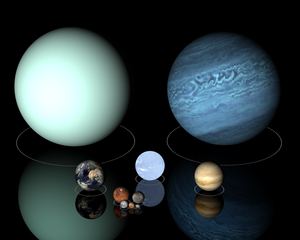
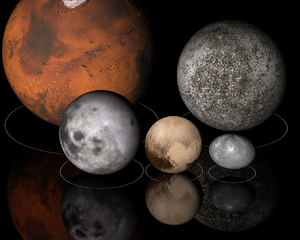



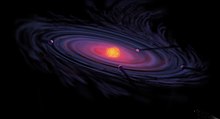

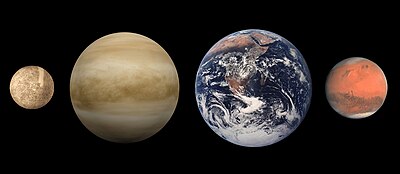
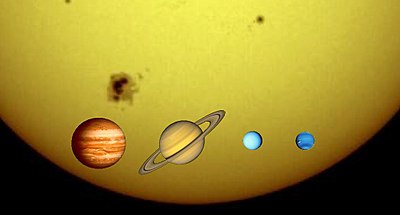

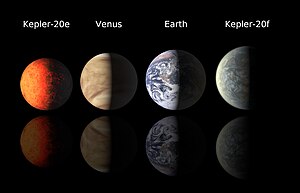
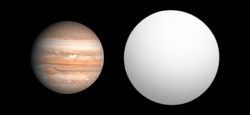

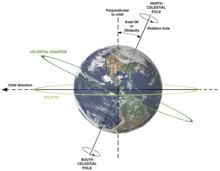
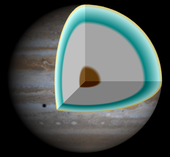
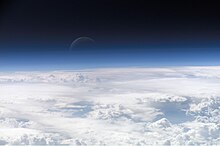




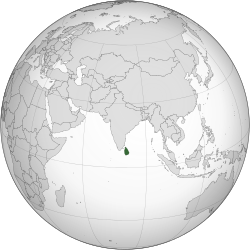



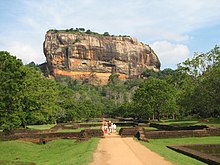
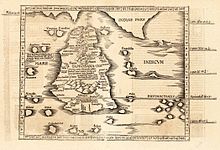



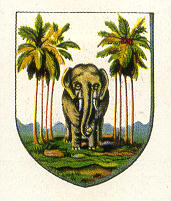




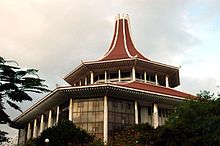
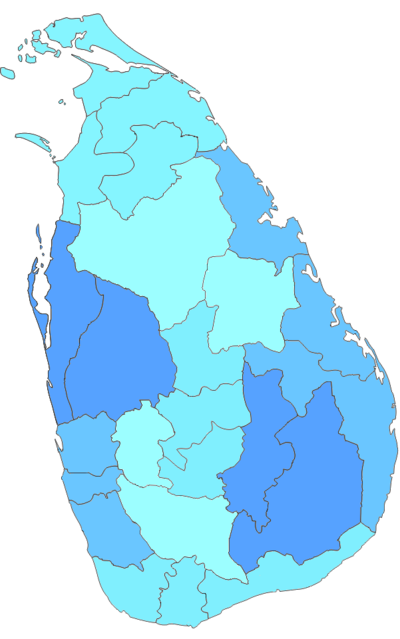



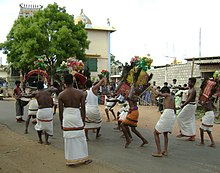
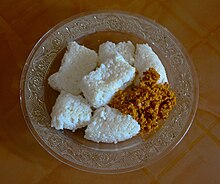




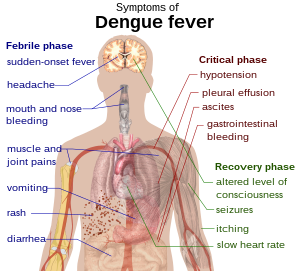
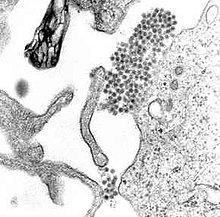
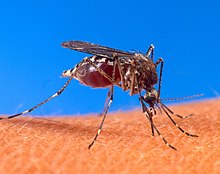


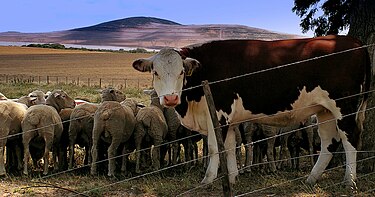







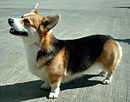

















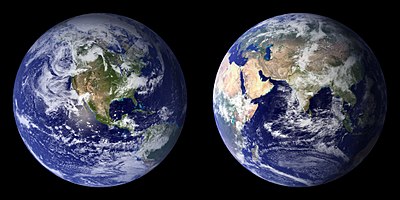

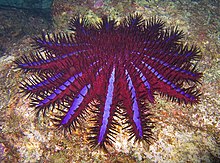








No comments:
Post a Comment